THE LINK to #urbanana:
art and design of the Wehrhahn Line – Metro Marvel
Buchwelten / in English: 
The German version: here.
No “Buy us!” No “Rent us!” No “Click us!” Instead, I find rigorous concentration, and an absence of advertising anxiety. The descent into Düsseldorf’s underground world is an ascent into a holistic platform of traffic culture. Sensuality, the muses and the arts are all a part of the concept of the Wehrhahn Line, as are comprehensible signage and orientation systems, and the clear division of the architectural spaces. The new underground line, with its six stations, has resulted from the continual collaboration of architects, engineers, artists and the municipal administration over a decade and a half. The Darmstadt practise of netzwerkarchitekten with the artist Heike Klussmann, won a two-phase, European Union-wide competition for the project in 2001, with their concept of the train line as an art line. Art was henceforth an integral part of the building work; it had an impact on the architecture, and intervened in every level, space and stairwell. The unifying element of all six stations is their light, relief-like net structure, with the diamond shape as its basic unit. It is generated by the joints of the building parts and is constantly varied, so that the platform walls have a spatial function and seem to shift. The fascinating thing about the movement of the rhombuses and the six art spaces: One can pause to take in the effect of the train stations as traffic galleries, with ambitious art and state-of-the-art technology – or not. Even when one heedlessly hurries through the art-architectural spaces, these things will not be ineffective. And it so happens that the train stations seem pleasant and aesthetic. The passenger will have all the buy/rent/click stuff on their smartphones anyway, or shortly after leaving the Wehrhahn Line, so it is worth immersing oneself for a short ride in these other worlds. In this overview, we will show you how this looks.
Kirchplatz Station – Enne Haehnle Spur X
»Enne Haehnle’s textual sculpture is both communication and self-communication; it constructs language and with her playful formations returns to the intention of signs and drawings, the communication of information.«
Heidi Stecker, author, art historian
They arch and writhe, they climb up the height of the wall and creep around the next corner. These red bands are lyric poetry. For the design of her train station, Enne Haehnle wrote original poetic texts. From these texts, she forged strands of steel glowing red that indicate no directions – a game of perspectives and (il)legibility.
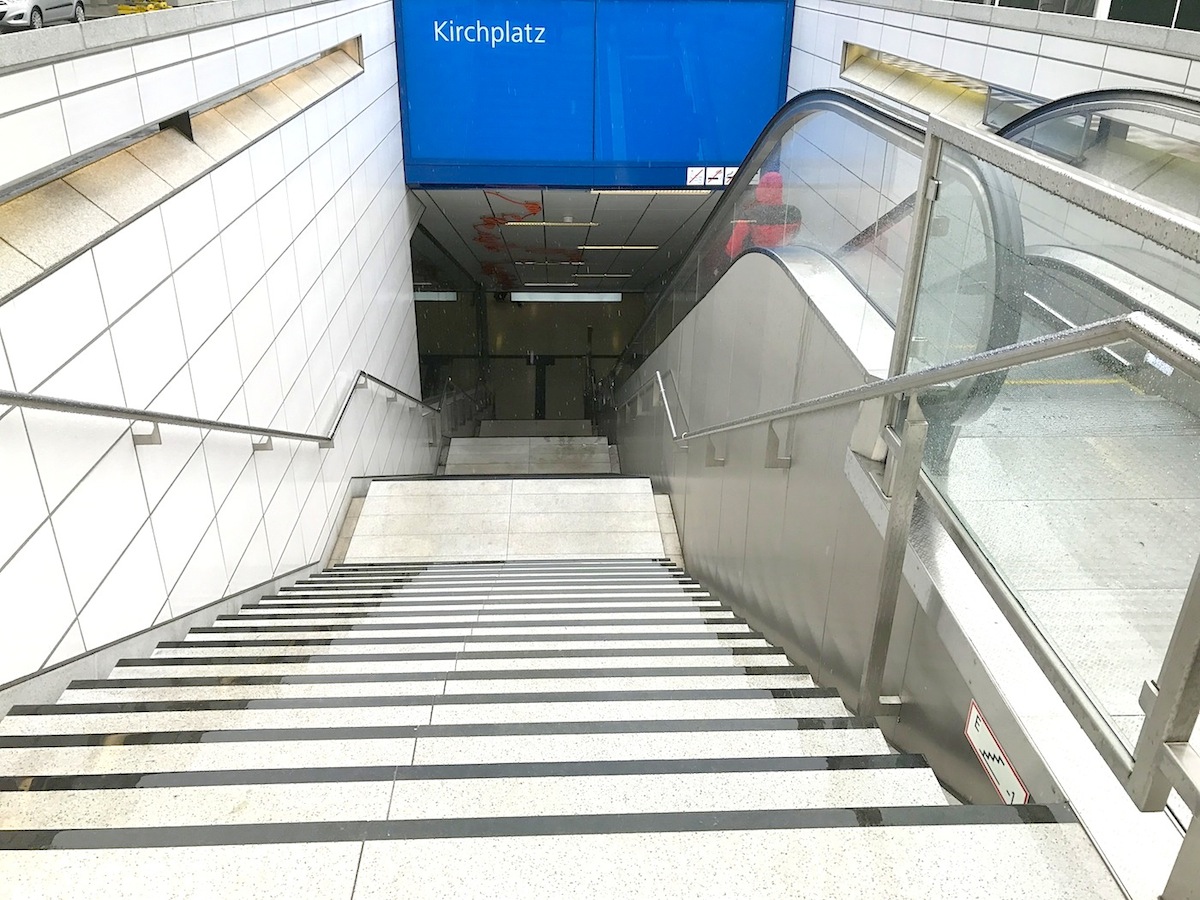
Kirchplatz Station
Enne Haehnle: Spur X
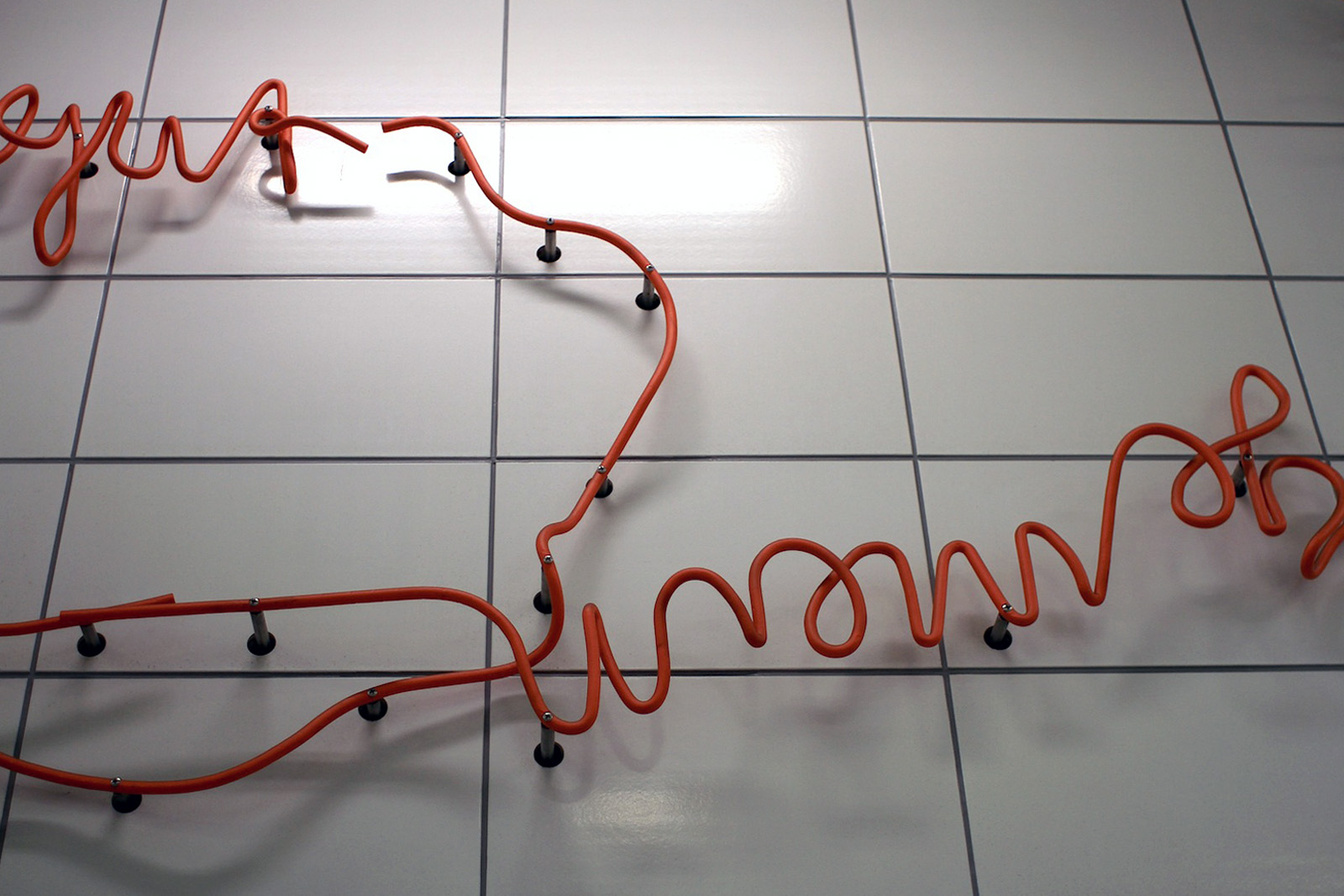
Kirchplatz Station
For the station at Kirchplatz, Enne Haehnle wrote poetic texts and ...

Kirchplatz Station
... then gave them sculptural life.
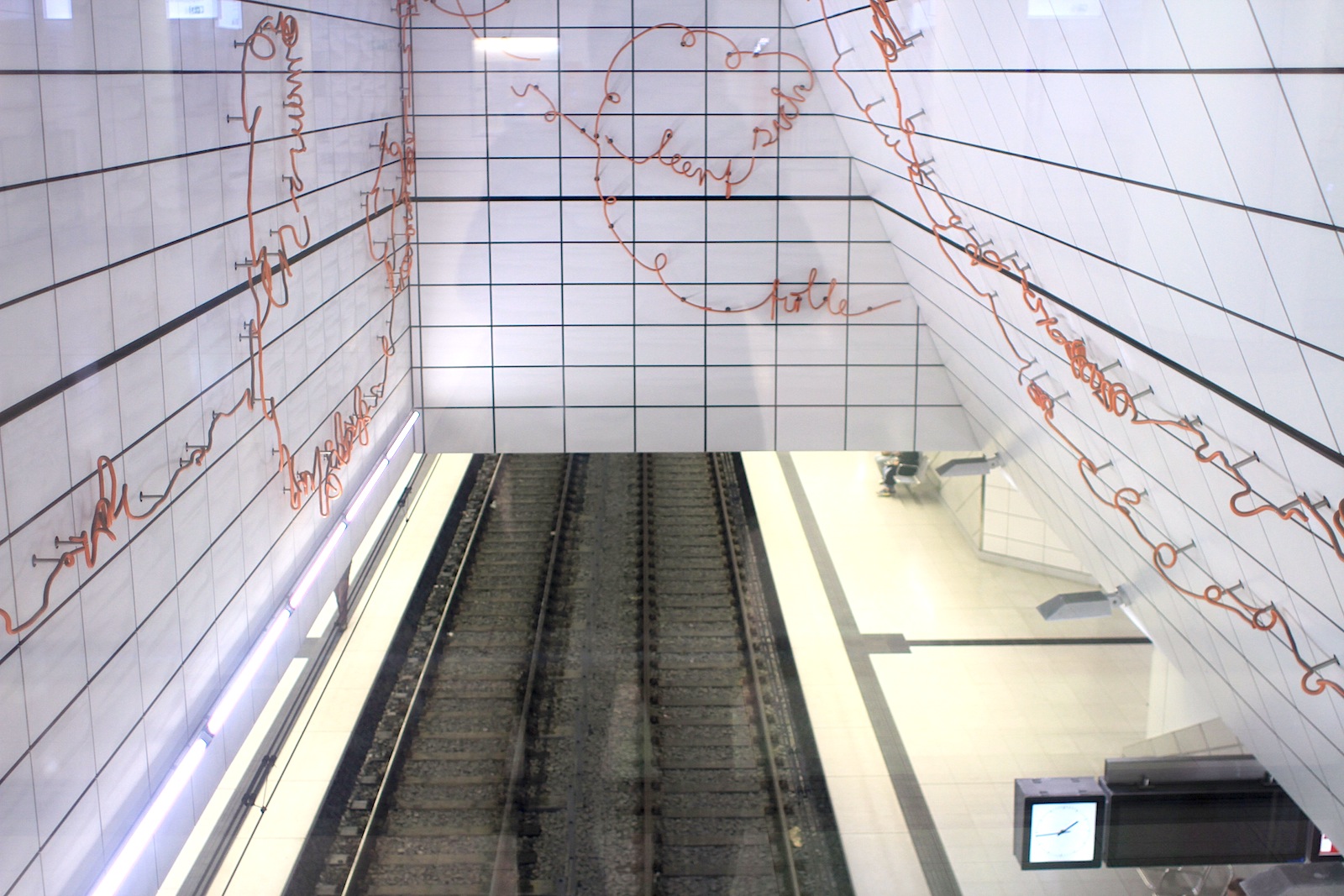
Kirchplatz Station
The lines of text leading passengers down into the subway begin at the 3 entrances.

Kirchplatz Station
And then accompany the passengers to the tracks.
»What could also be perceived as disruptive, i.e. the streaks on the wall that can be unpleasantly associated with pollution or mold, is in aesthetic terms ultimately the actual experience.«
Ludwig Seyfarth, author and curator
Graf-Adolf-Platz Station: Manuel Franke – Agate (Achat)
They flow, and form a greenish-black world. The lines meander and fall off here and there in this green cosmos. The station at Graf-Adolf-Platz is in the form of a quartz crystal, agate being a form of the mineral quartz. In agate, crystallisation forms a striped design. Manuel Franke, on the station: "The descent to the tracks correlates to a plunge to the depths of a layer of stone."
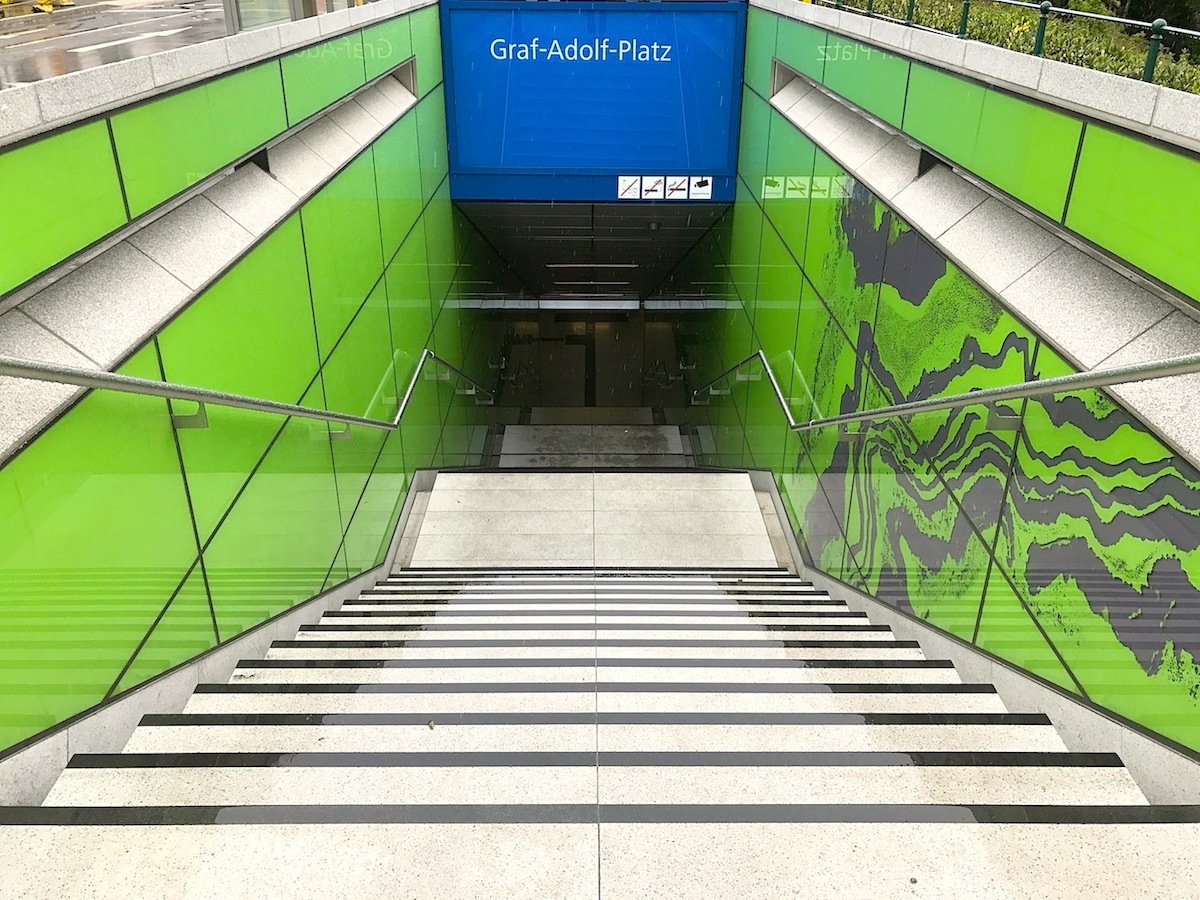
Graf-Adolf-Platz Station
Manuel Franke – Achat
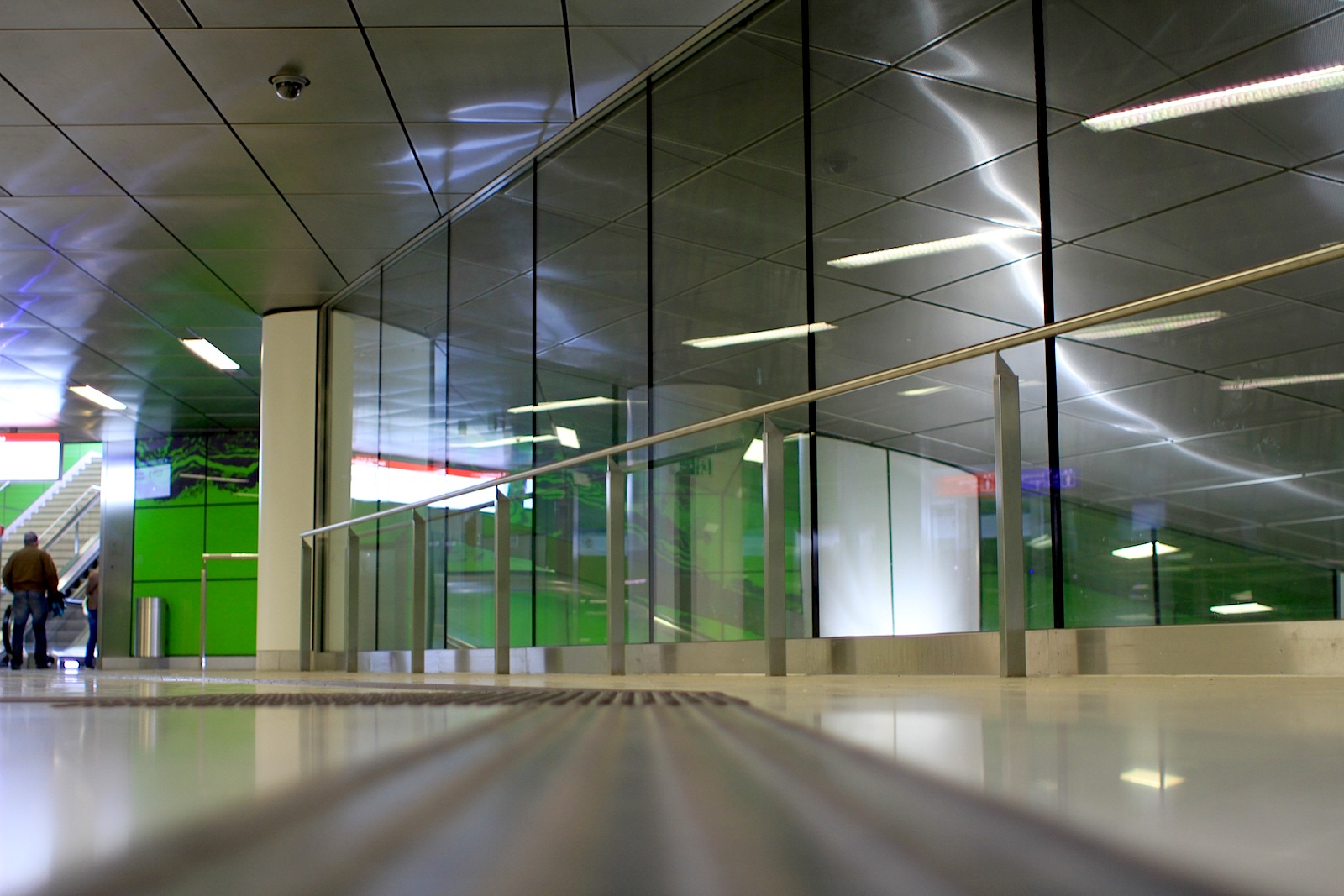
Graf-Adolf-Platz Station
Manuel Franke has used hundreds of panels of luminous green glass ...
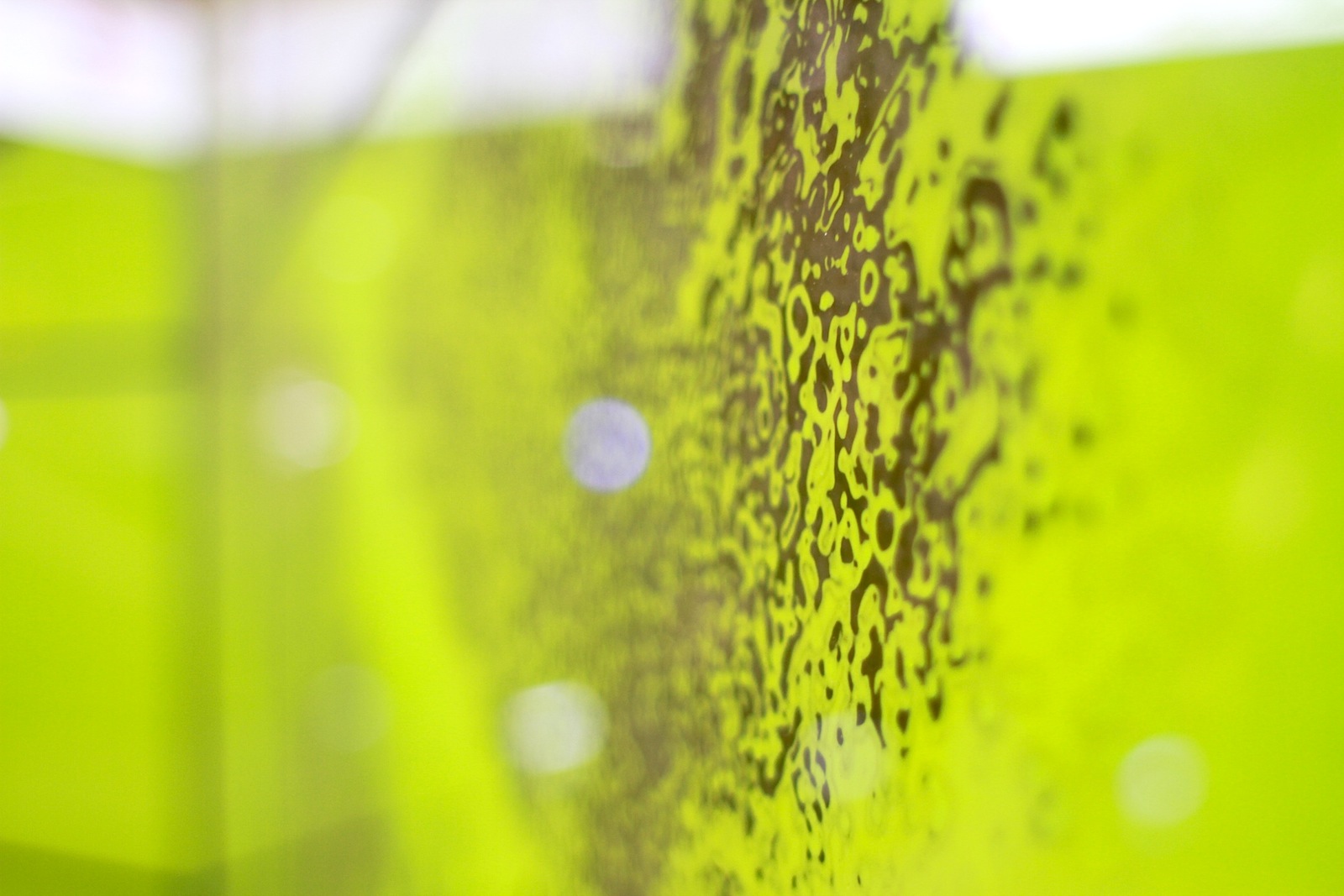
Graf-Adolf-Platz Station
... to create an immersive chromatic environment interrupted only by a powerful flow of lines.
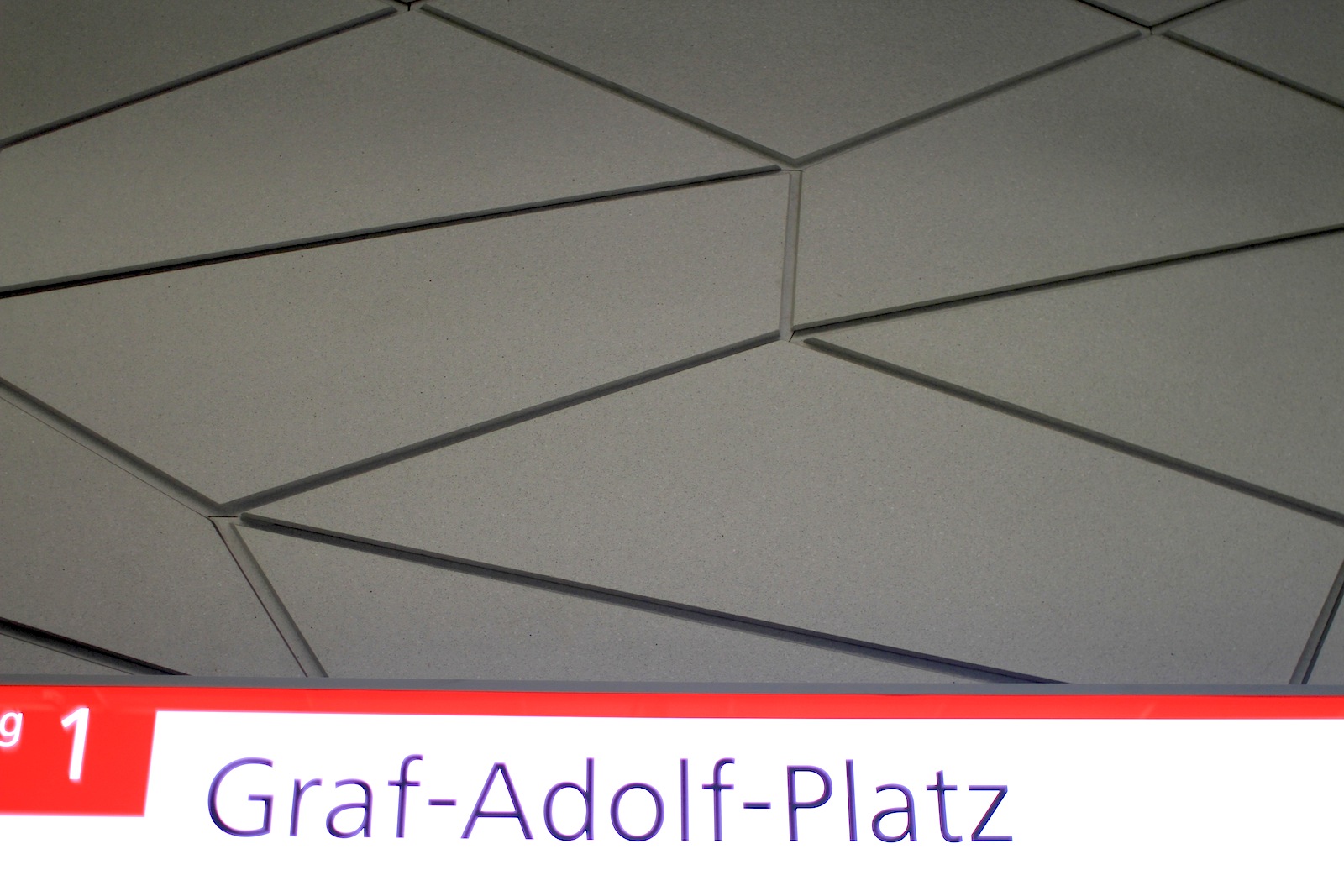
Graf-Adolf-Platz Station
The Continuum of Heike Klussmann and netzwerkarchitekten: The precast concrete wall reliefs that runs through all the stations.
»Space: the final frontier. These are the voyages of the star ship Enterprise. Its five-year mission: to explore strange new worlds, to seek out new life and new civilizations, to boldly go where no man has gone before.
«Star Trek, introductory speech
Benrather Straße Station: Thomas Stricker – Heaven above, heaven below
They fly in boundlessness and are plunged into the depths, they create a pattern and defy categorisation. The embossed designs of the silver shimmering stainless steel panels in the spaceship of this station do (and do not) act as a symbol for over and under, for right and left. The levels and spaces spill over into one another and, in the end, are fixed: a Thomas Stricker universe has been created in the underground. Powerful, oppressive, space-sleek.
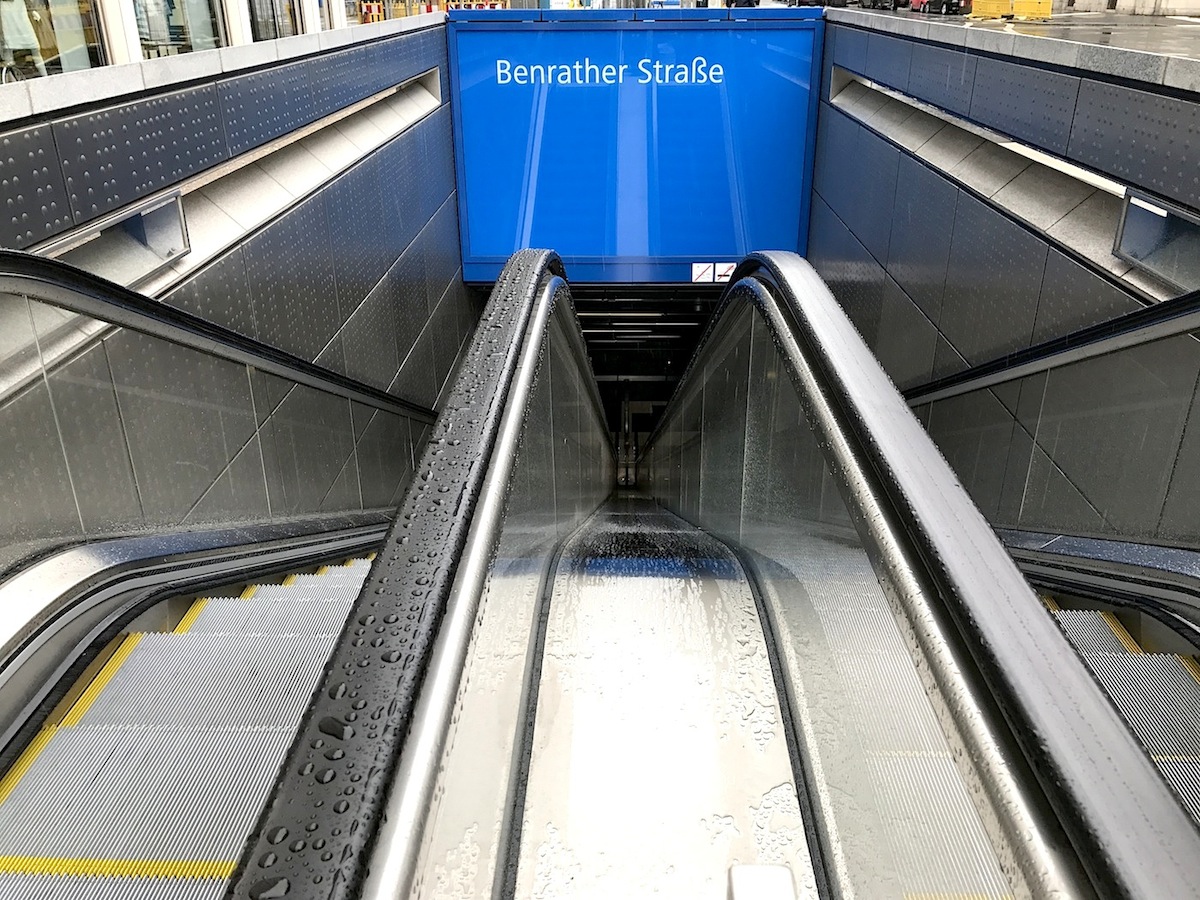
Benrather Straße Station
Thomas Stricker – Heaven above, heaven below
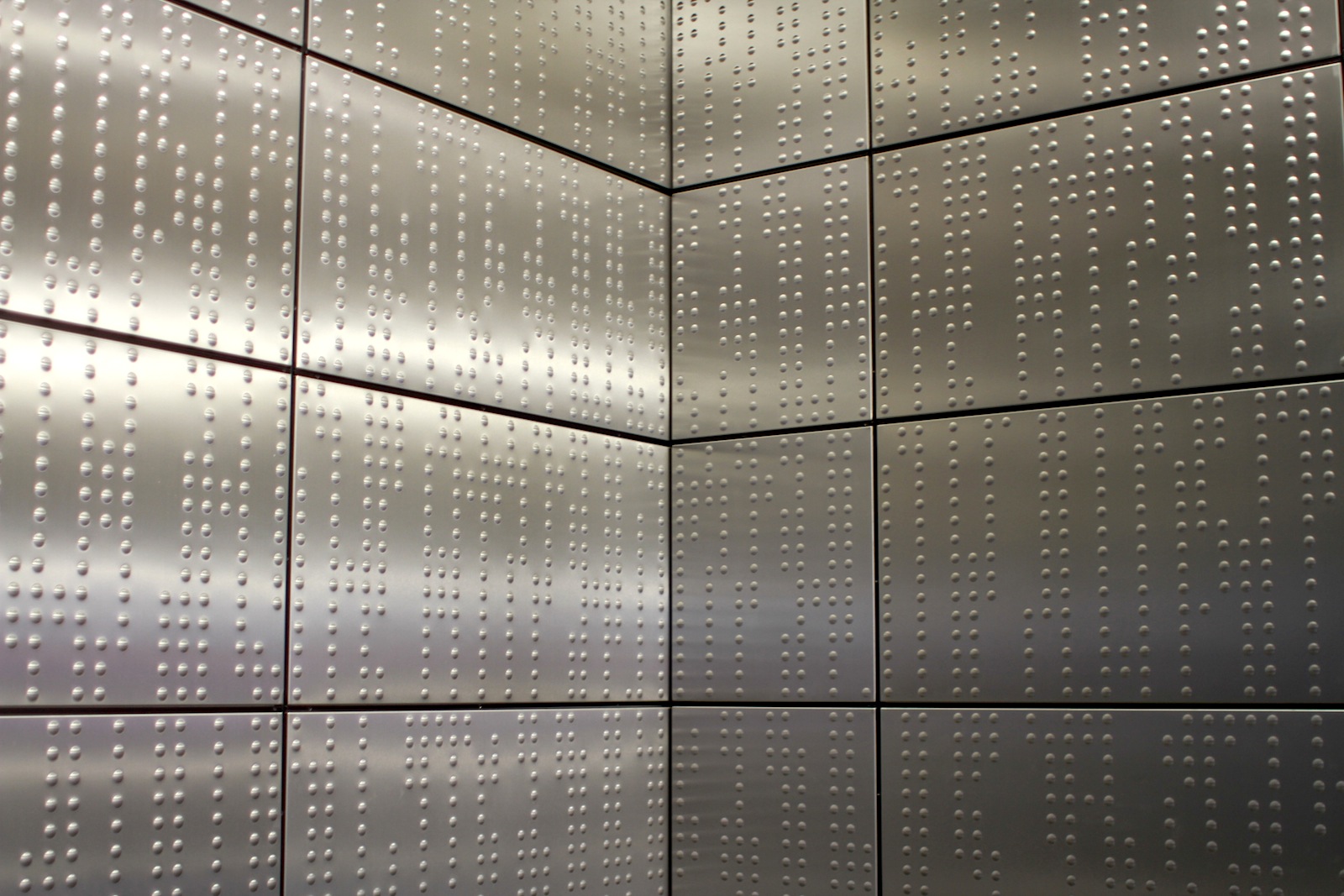
Benrather Straße Station
Through a conceptual inversion of the space surrounding the architecture ...
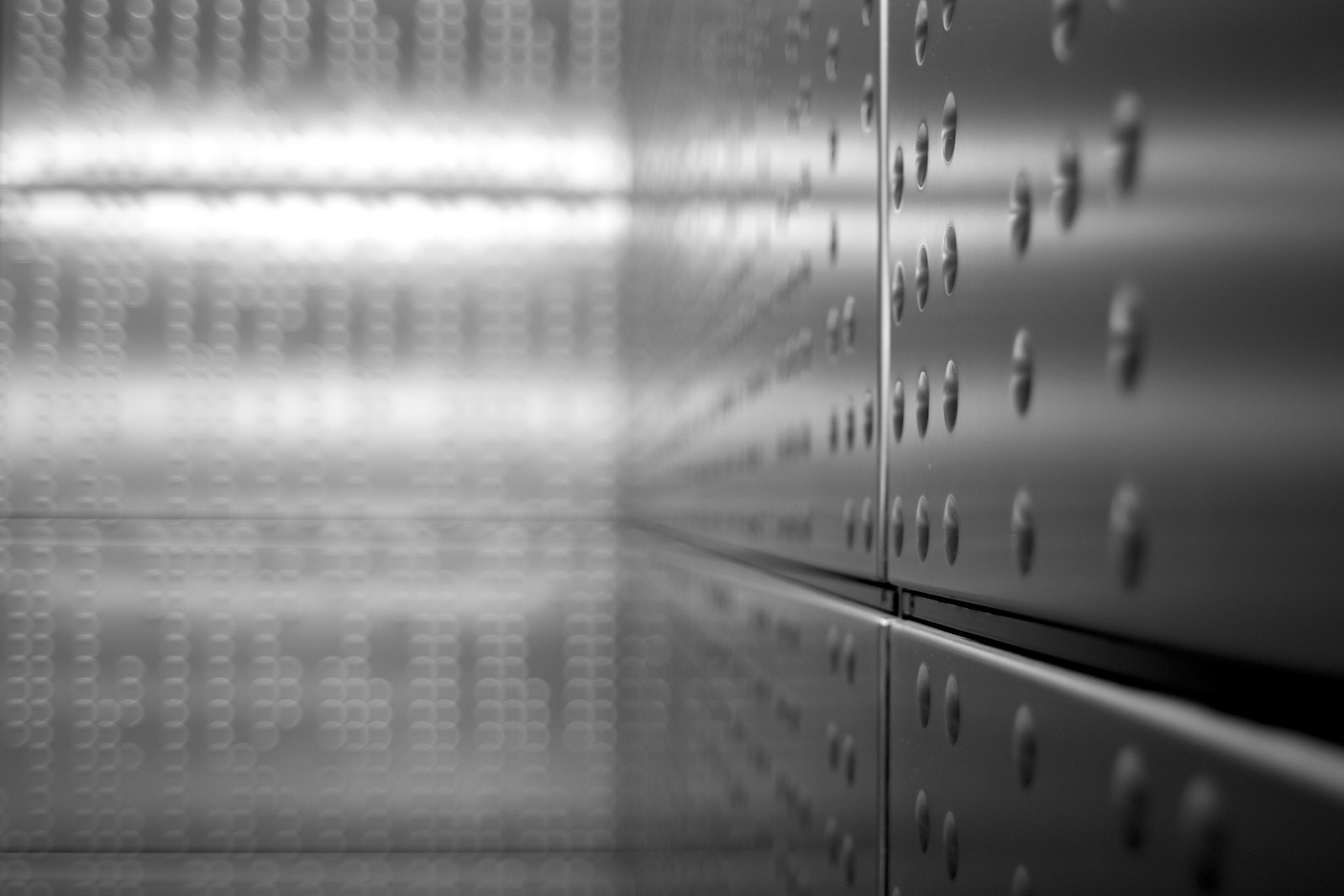
Benrather Straße Station
... Thomas Stricker gas brought the universe, with its planets and stars ...
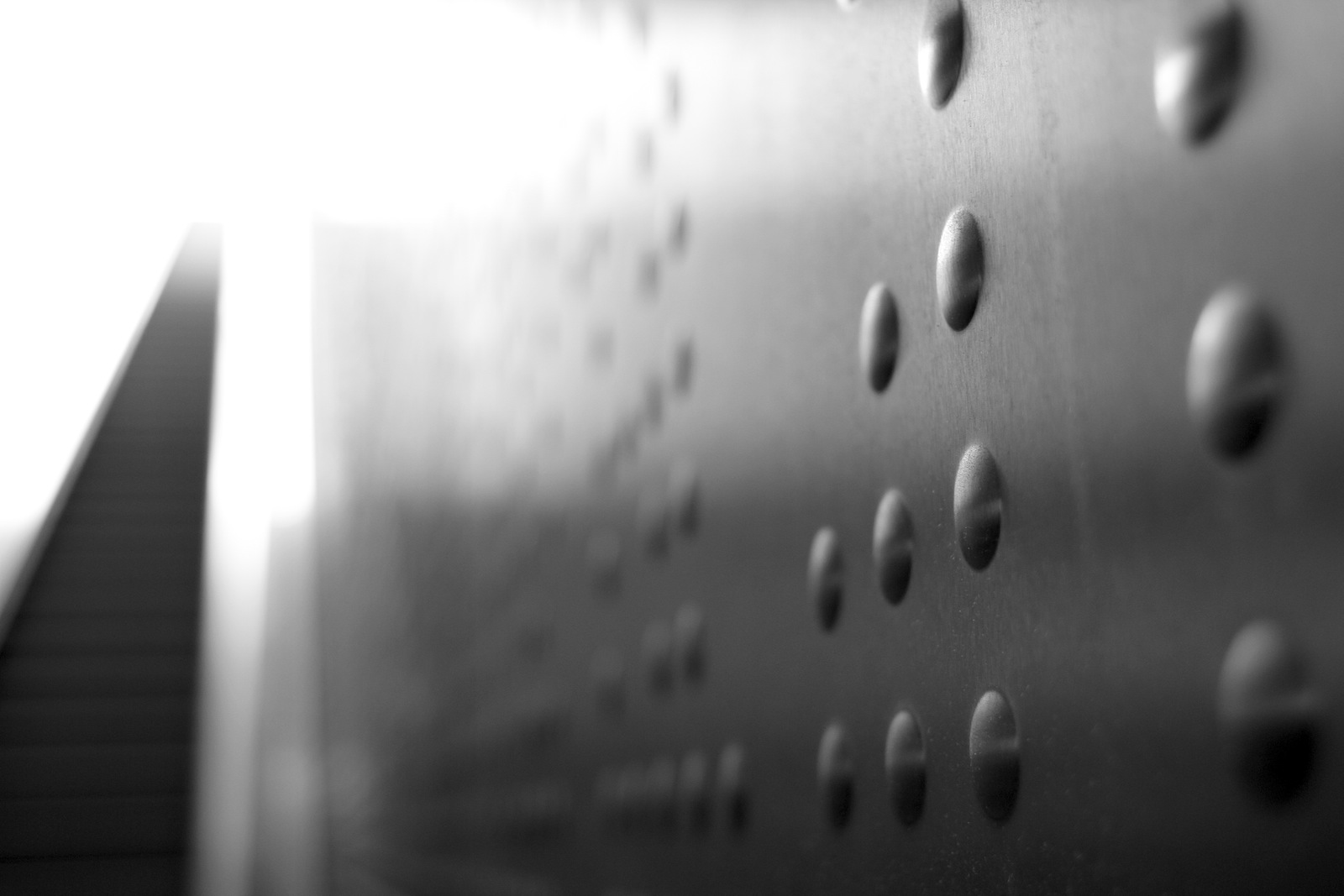
Benrather Straße Station
... its tranquility and weightllessness into the underground world of the subway station. A stainless steel embossed matrix covers the walls.
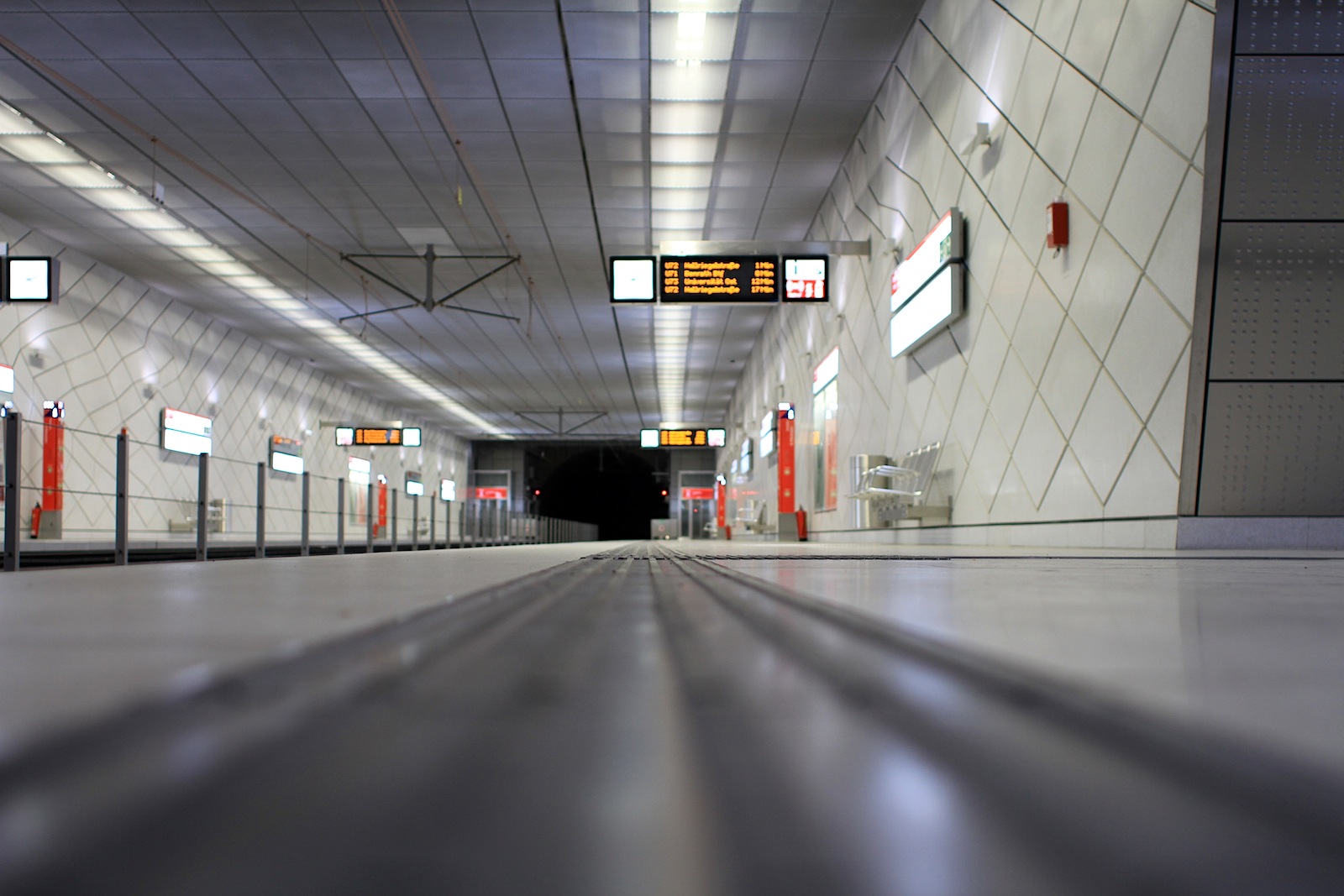
Benrather Straße Station
In cooperation with netzwerkarchitekten, the interior design of a spaceship was developed for the station.
Heinrich-Heine-Allee Station: Ralf Brög – Three Model Spaces (Drei Modellräume)
They tremble and float, they vibrate and swing through the underground spaces, and the best parts are the irritations and the questions: Are these sounds coming from here? Or am I imagining it? In the Heinrich-Heine-Allee station, the artist Ralf Brög has installed three different sound corridors at the three entrances: “Theatre,” “Laboratory” and “Auditorium.” Three spaces with highly sophisticated sound systems, with visual effects and sound sculptures and materials. Whoever has the answer to the original source of the sounds, finds himself confronted with the next question: Should I continue on my journey, or simply abandon myself to these three sound- and installation-universes?
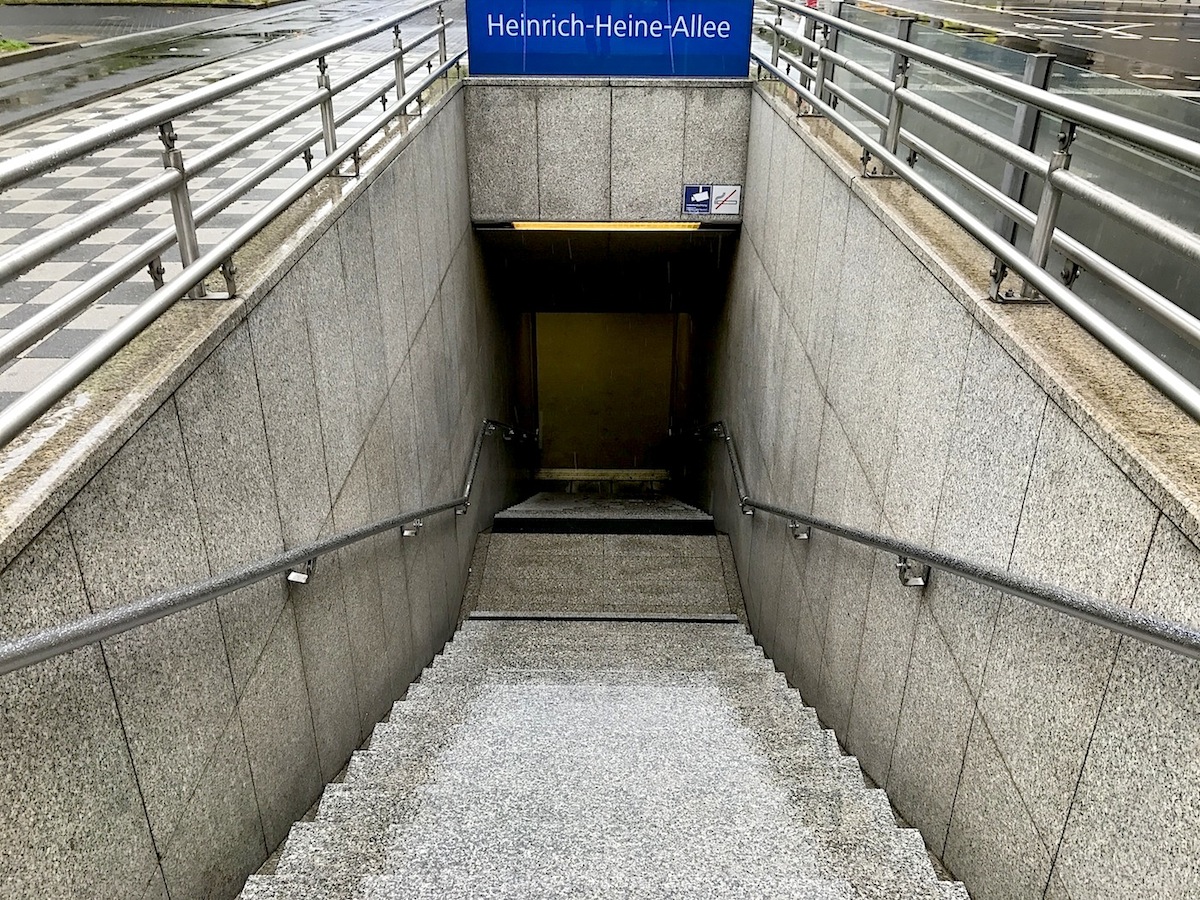
Heinrich-Heine-Allee Station
Ralf Brög – Three Model Spaces (Drei Modellräume)
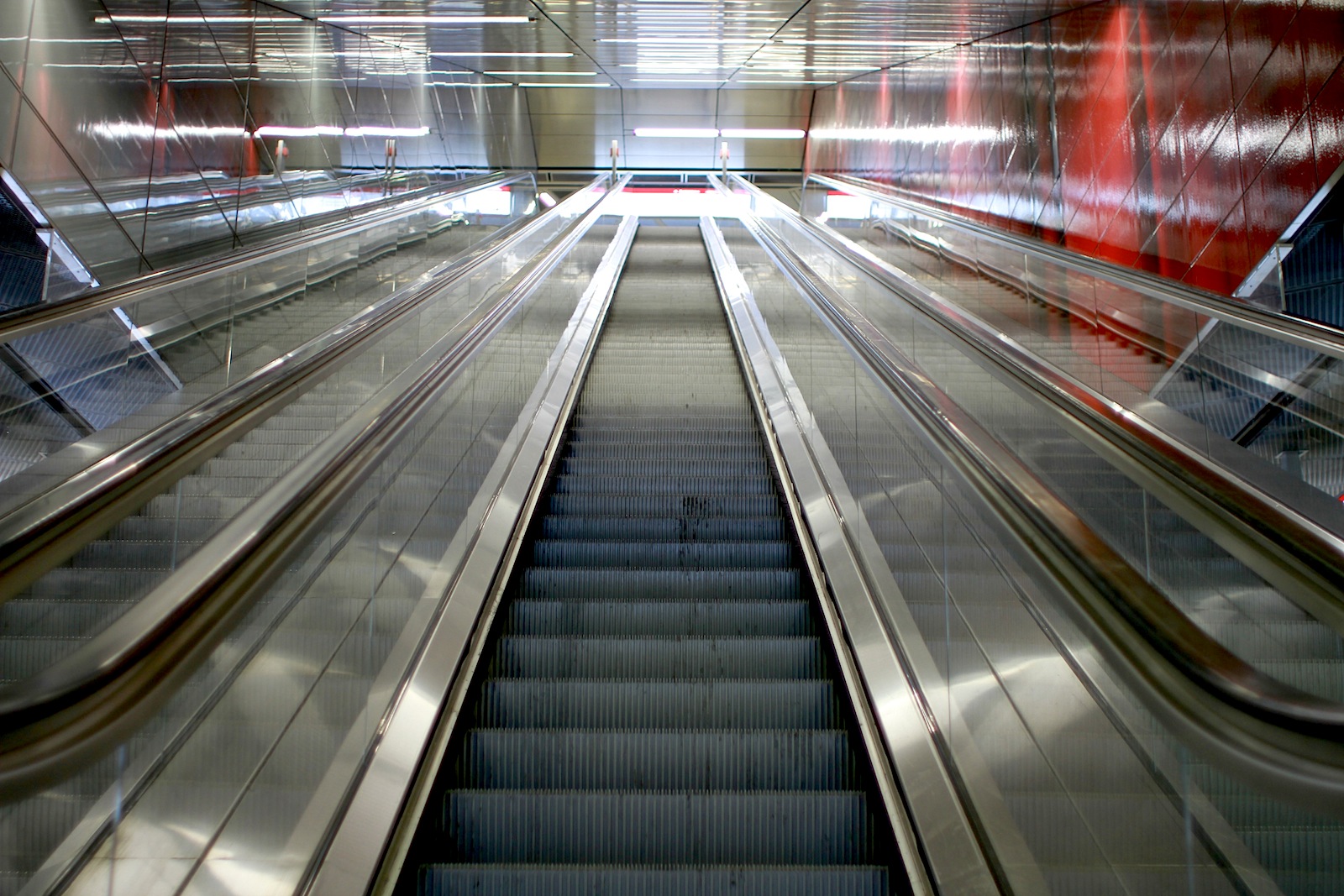
Heinrich-Heine-Allee Station
Ralf Brög designed the 3 new entrances to the Heinrich Heine Allee station as visual and acoustic venues for the performance of changing sound compositions: as an "Auditorium", a "Theater" and a "Laboratory".
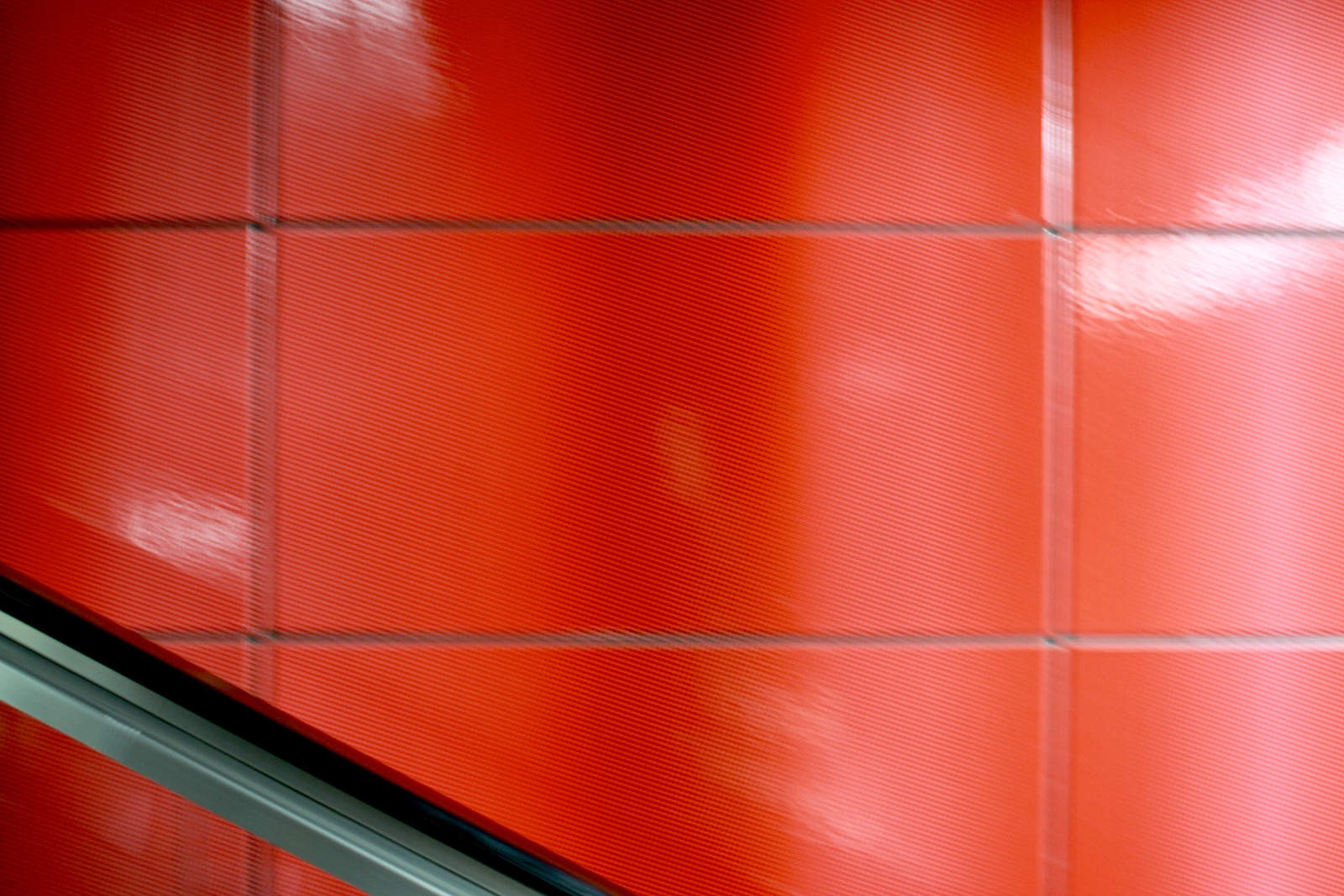
Heinrich-Heine-Allee Station
"Theatre" exit
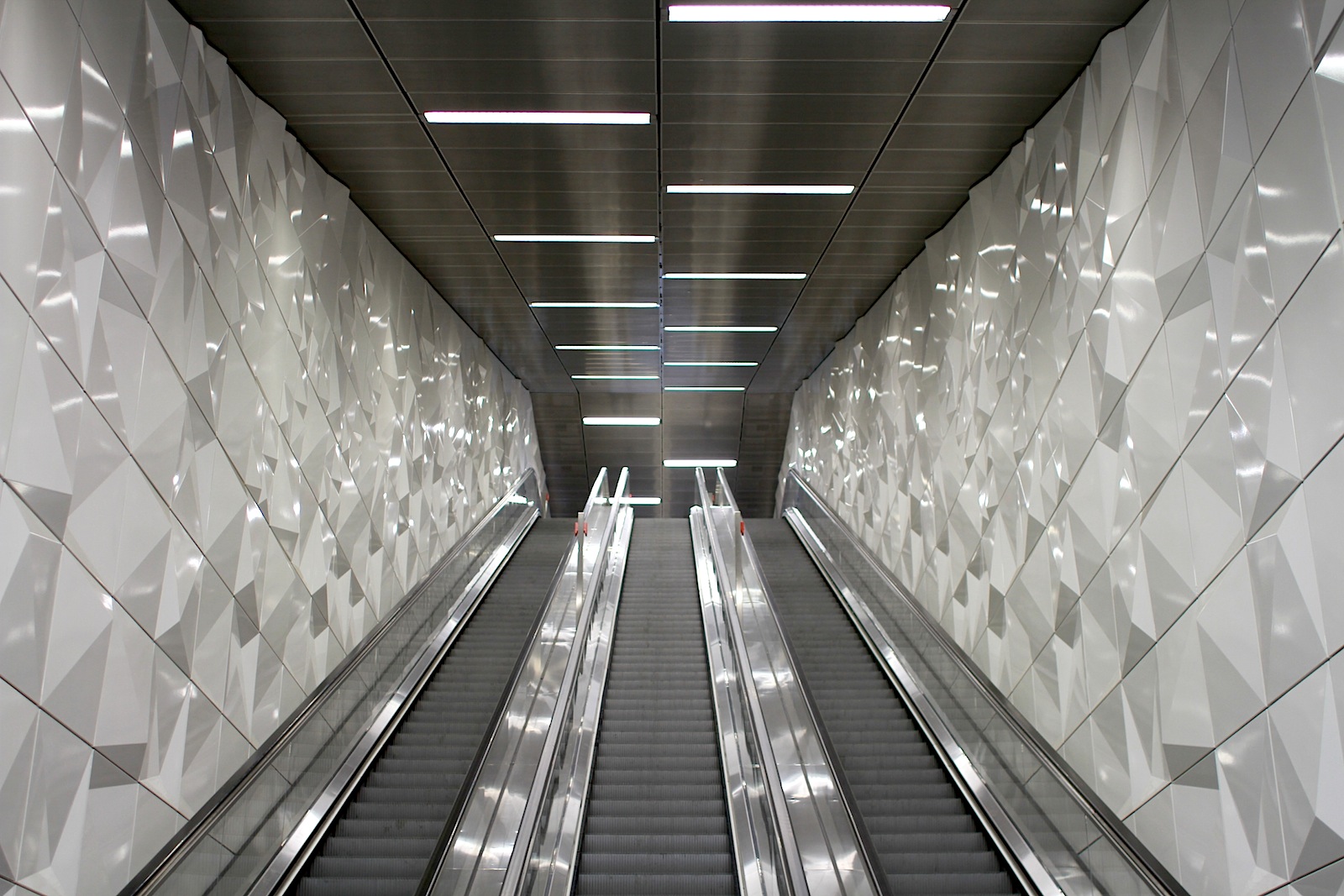
Heinrich-Heine-Allee Station
Each of the three model spaces boasts a high-quality sound system ...
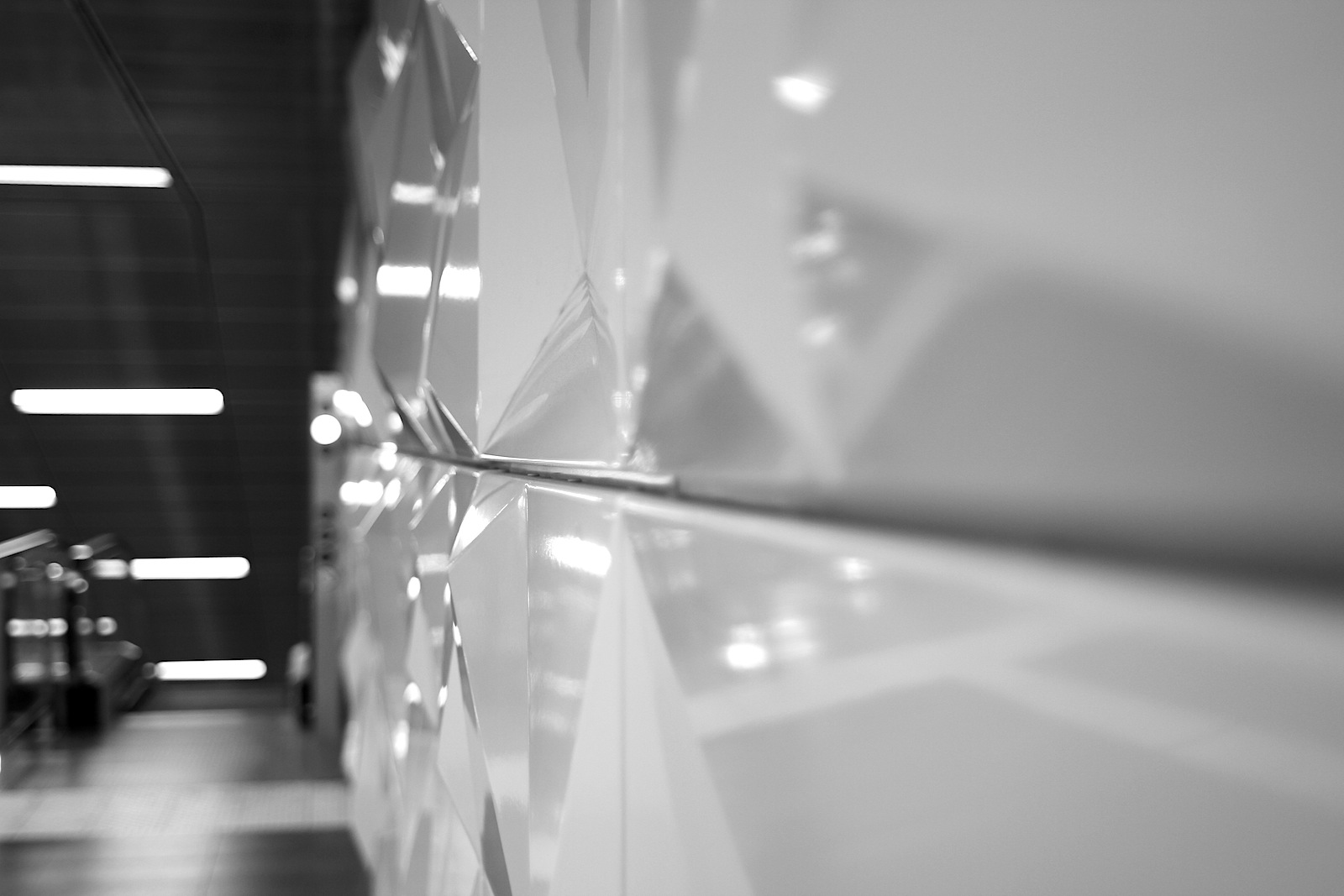
Heinrich-Heine-Allee Station
... enabling the most wide-ranging acoustic interventions possible.
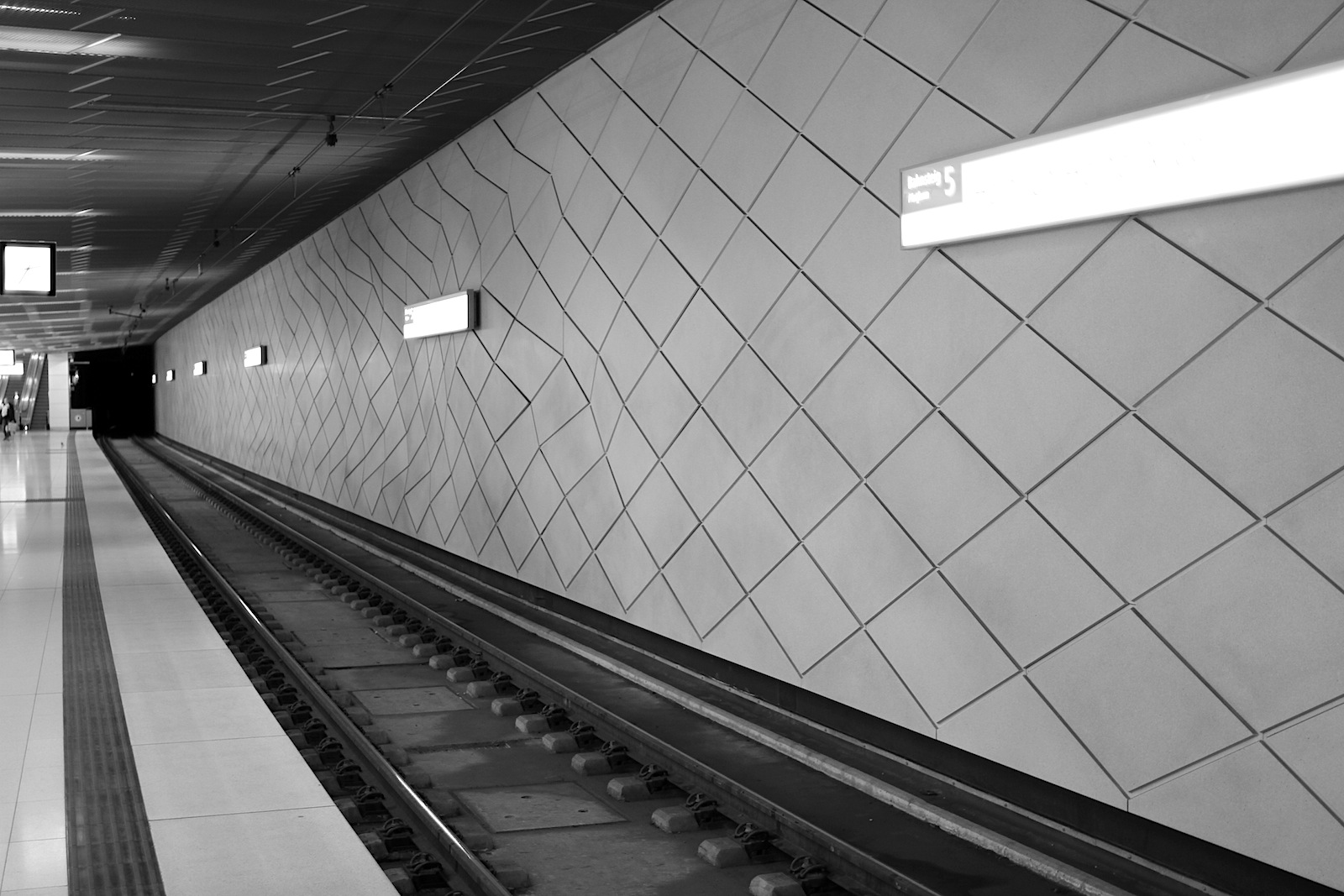
Heinrich-Heine-Allee Station
The wall of the Continuum.

Heinrich-Heine-Allee Station
The Laboratory focuses on the experimental use of tones.
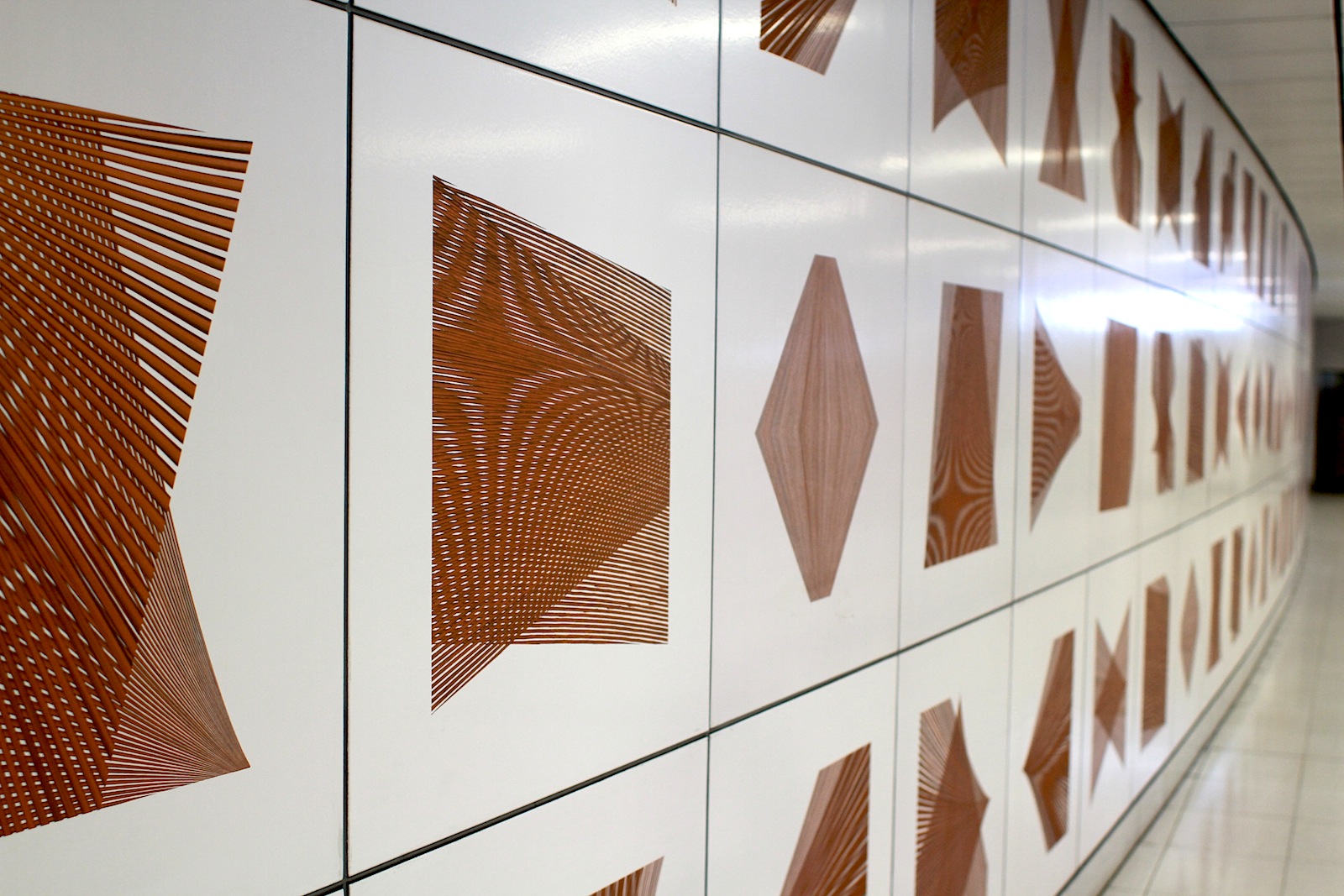
Heinrich-Heine-Allee Station
The Interference Atlas visualizes optical phenomena ...

Heinrich-Heine-Allee Station
... while opposite the sound sculptures hang in space.
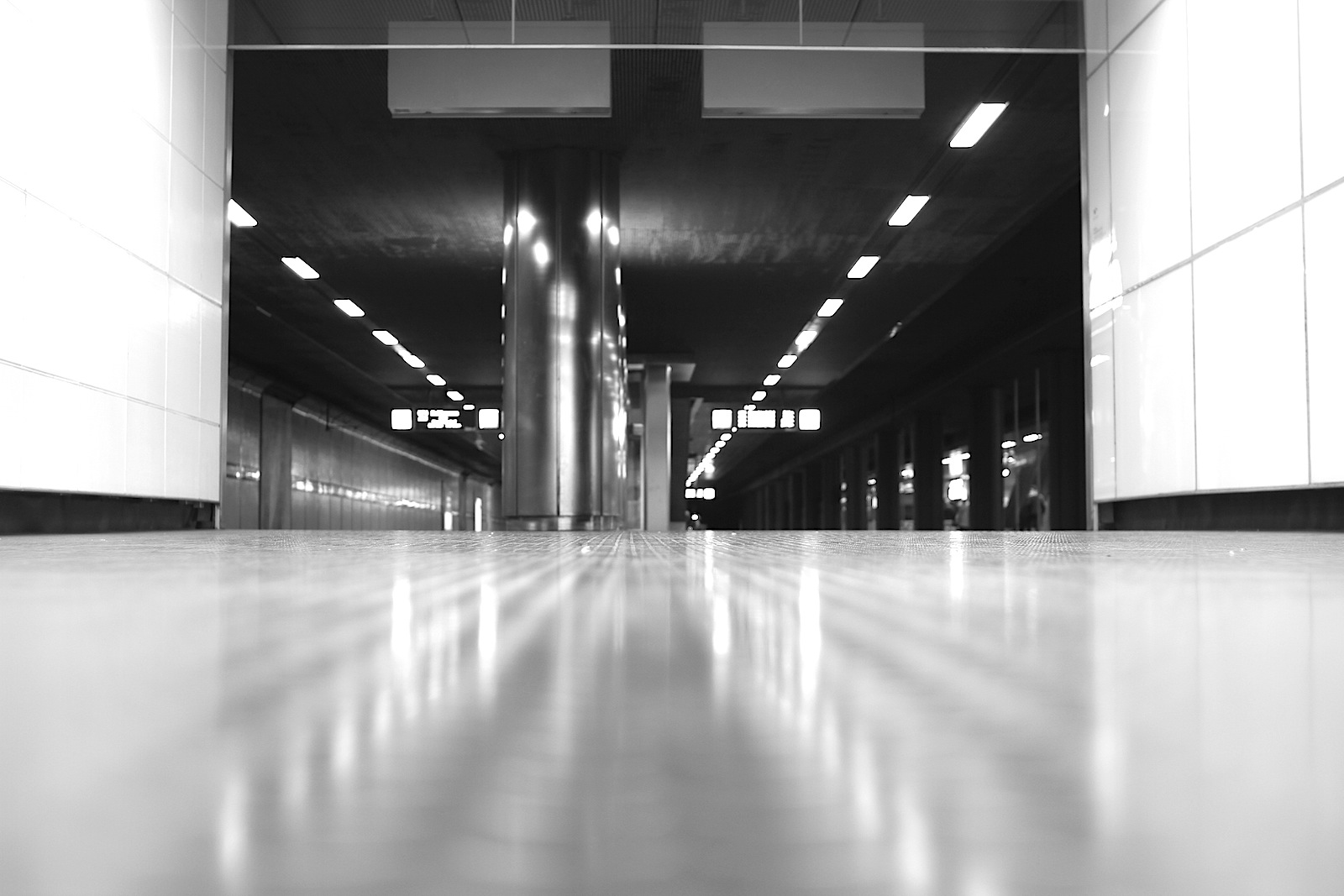
Heinrich-Heine-Allee Station
The high-quality equipment facilitates a unique compositional approach and an equally unique listening experience.
Schadowerstraße Station: Ursula Damm - Turnstile
They walk or run, they move and are marked as energy points. “They” are passersby, passengers and commuters in the interactive installation Turnstile, by the artist Ursula Damm. The core element is the LED projection screens that are programmed to transmit the movements of people on the surface in real time. Pictures of people become kinetic energies, framed by the geometries of the blue glass walls of the station.
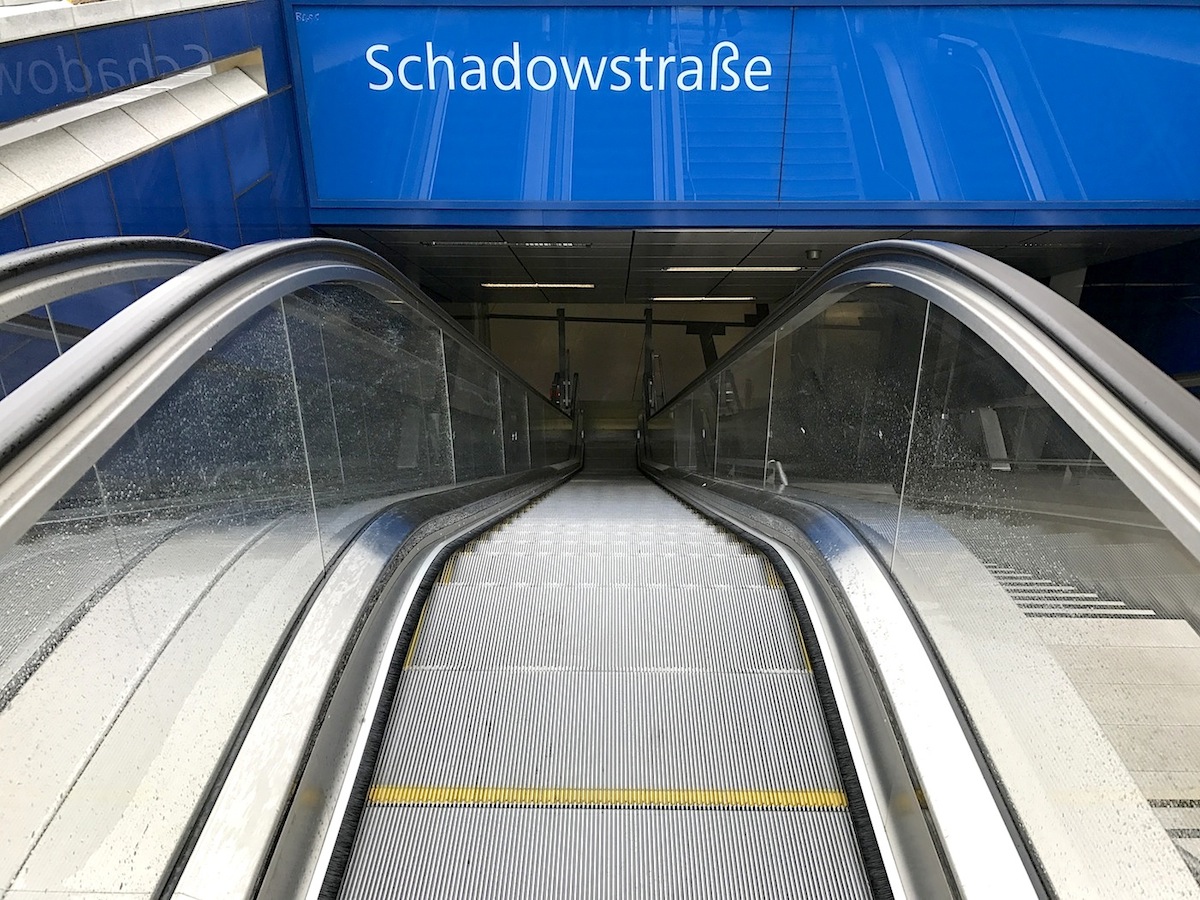
Schadowstraße Station
Ursula Damm - Turnstile
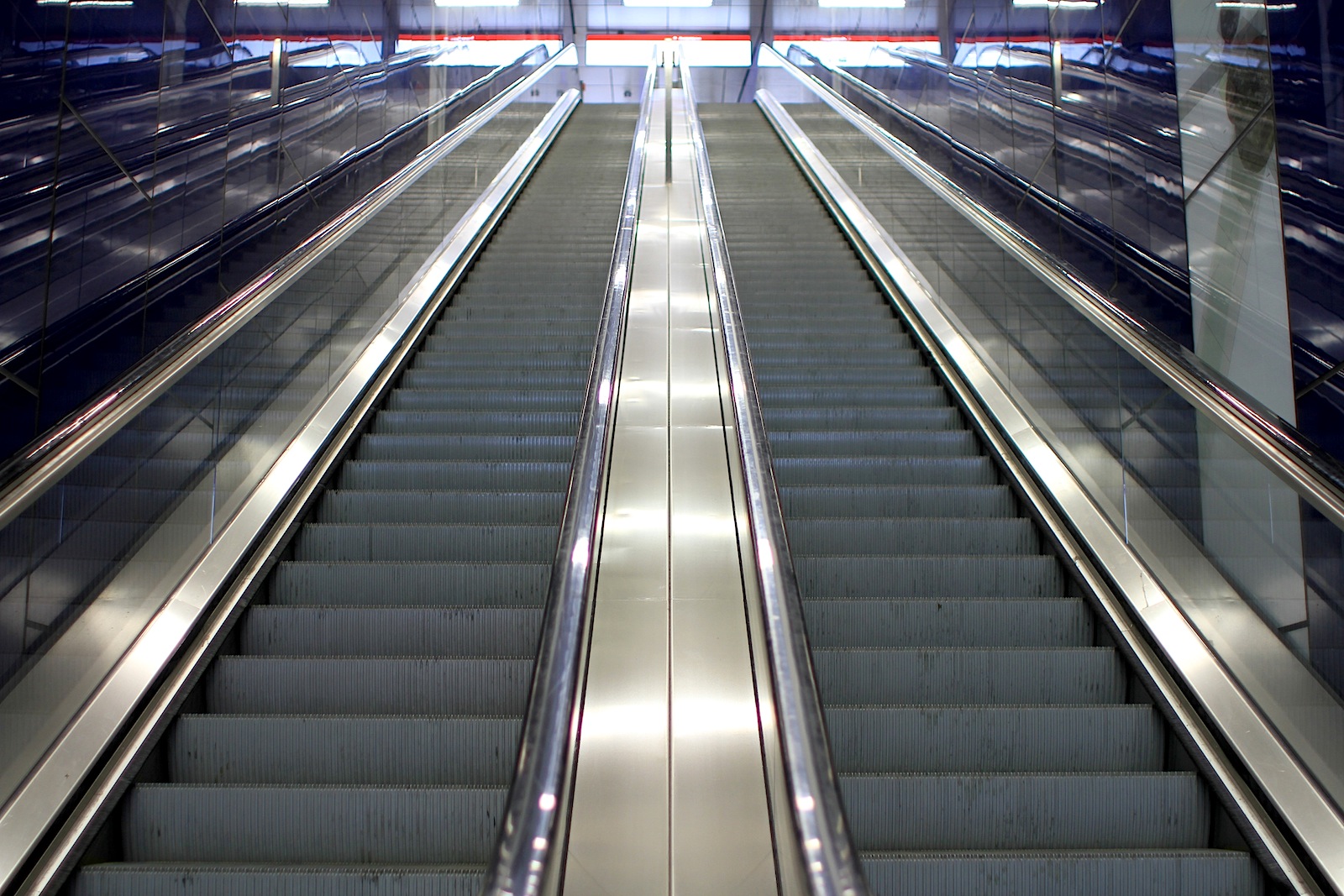
Schadowstraße Station
Ursula Damm has created an interactive installation ...
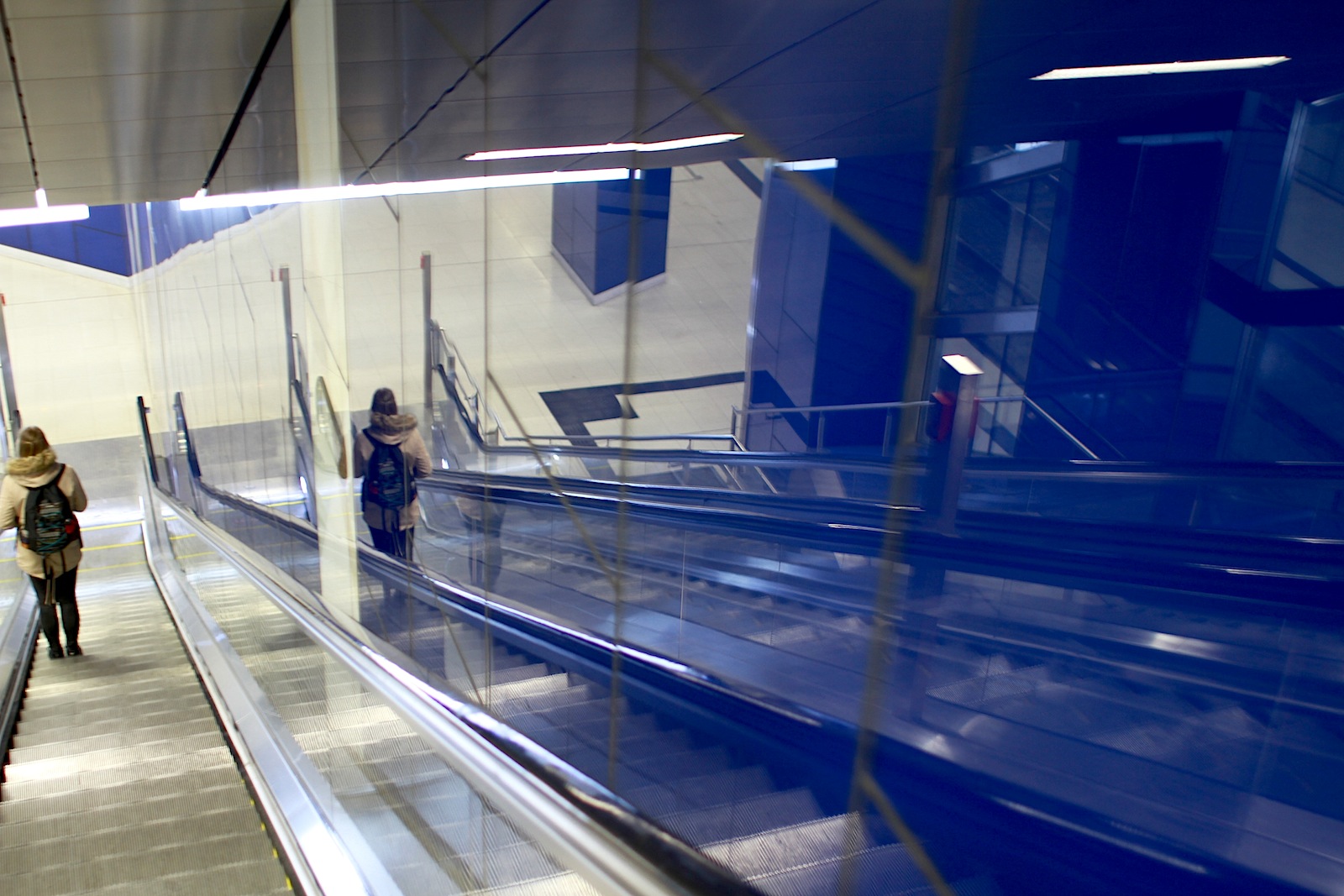
Schadowstraße Station
... involving multiple elements. At its centre is a large LED screen displaying ...

Schadowstraße Station
... the real-time movements of passersby on the city surface. Transformed through a computer program.
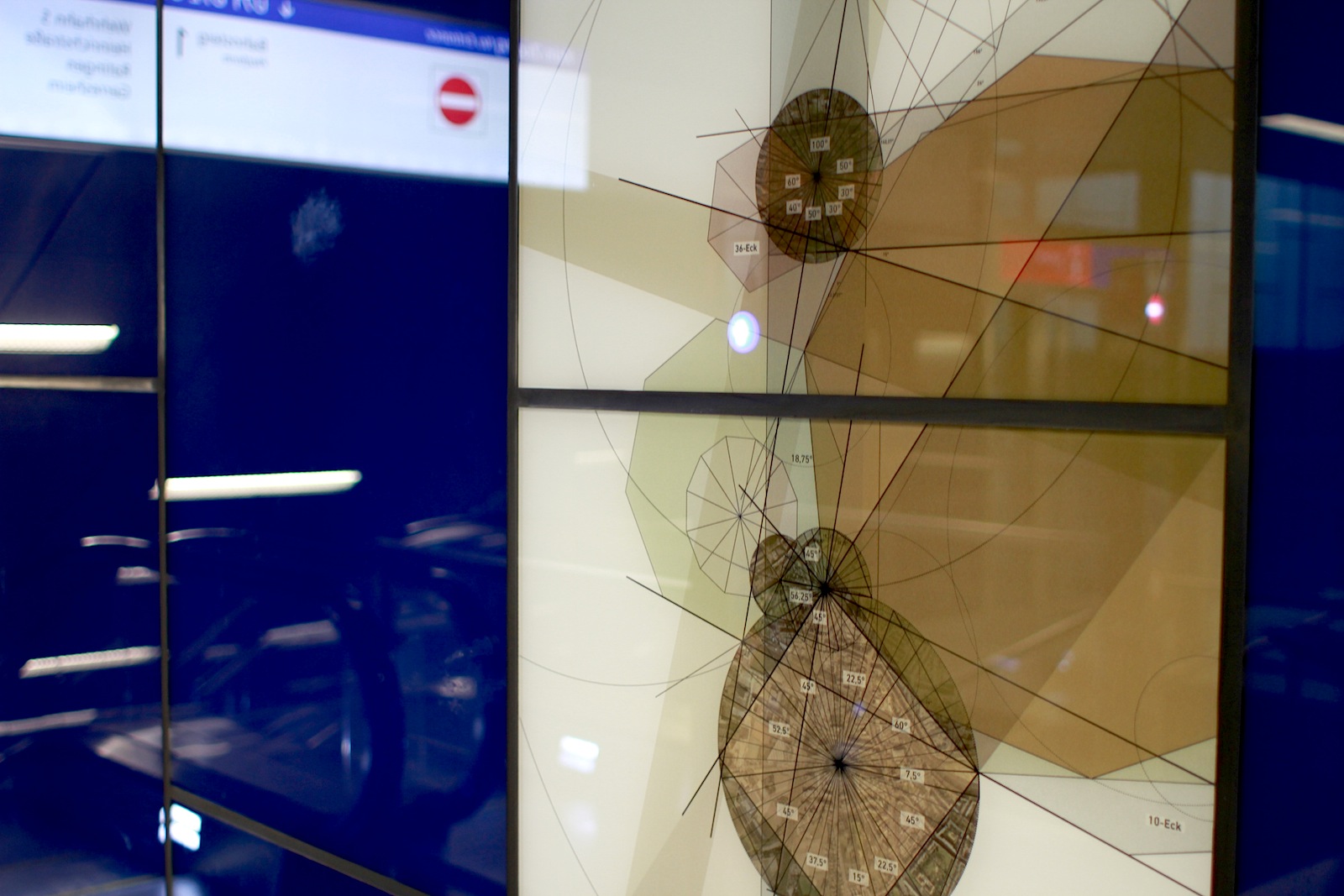
Schadowstraße Station
The resulting images of small, virtual life forms are created by means of the passersby.
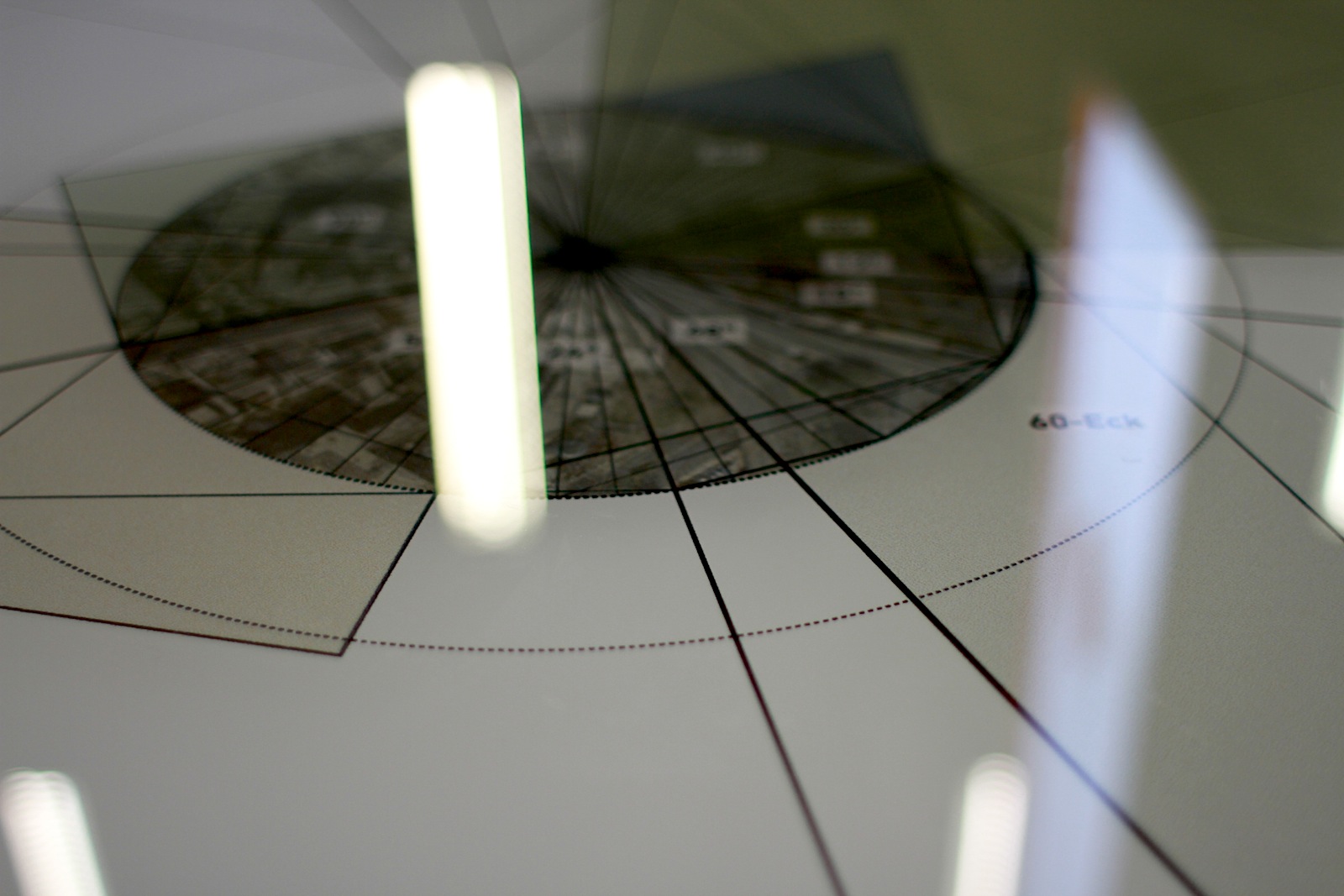
Schadowstraße Station
The concept recurs in the blue glass of the station's walls.

Schadowstraße Station
Geometrically interpreted aerial views of Düsseldorf are presented as a whole or excerpts.
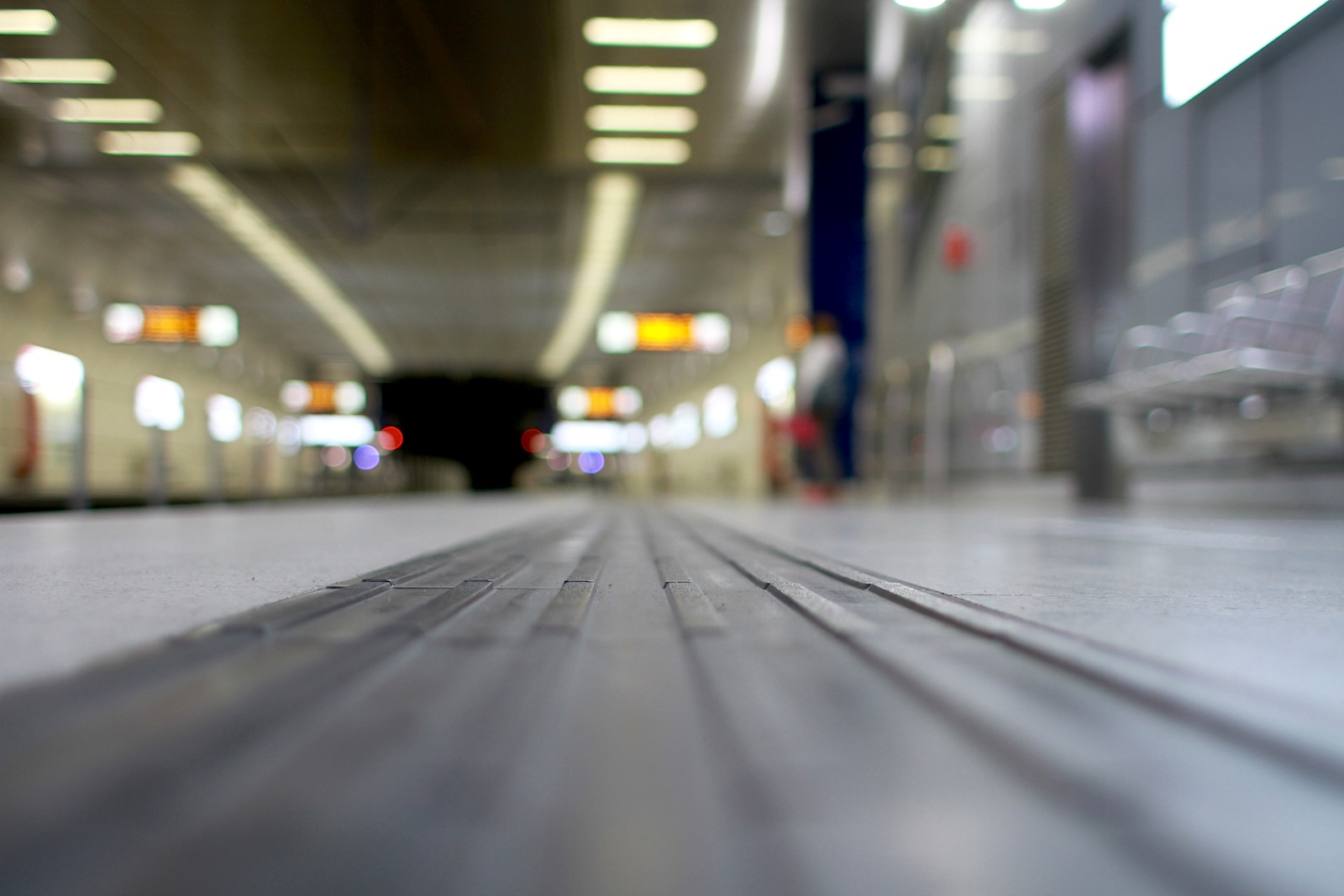
Schadowstraße Station
The track level of the station.
»At Pempelforter Strasse space and image alternate, the flatness of the black and white is made spatial by the overlapping and collision of the bands. As directed superscriptions on public space, the bands simulate pathways that extend absurdly into infinity - or gay, if the idea is continued in spectral terms.
«Anja Schürmann, art historian
Pempelforter Straße Station: Heike Klussmann – Surround
They stick through the walls and hang from the ceilings, they are angular, squared off and play with here and there, with here and now. The Pempelforter Straße station, by Heike Klussmann, is a sculpture with sculptures. The artist measured out the station and translated it into a 3D model with graphic banding. She laid white stripes over enameled walls, aluminum ceilings and concrete floors. The floor is black. White bands float through the five station entrances, through all the spaces, overlapping and joining up. A station in which floors, walls and ceilings seem to be woven into one another and which just repeats the idea: here and there, here and now.
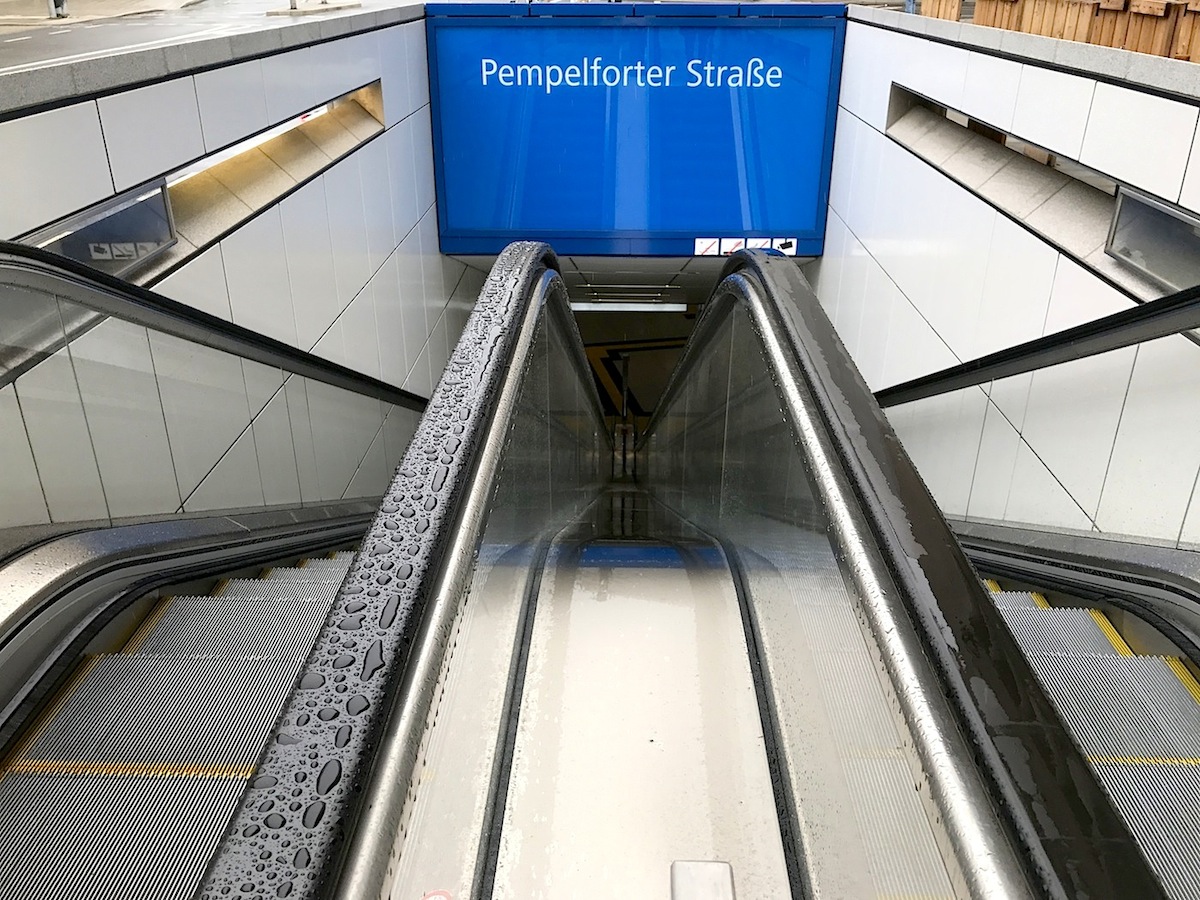
Pempelforter Straße Station
Heike Klussmann – Surround
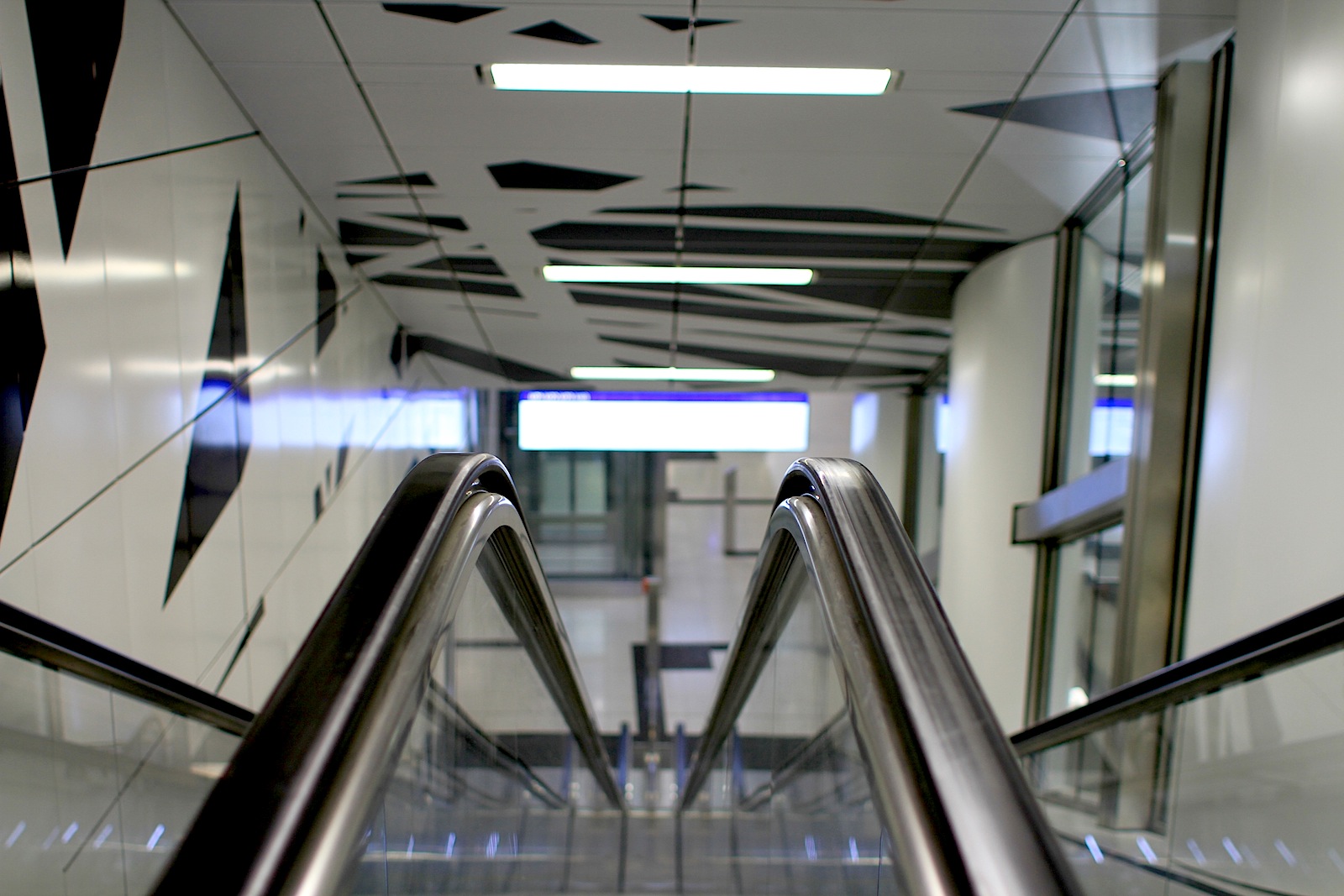
Pempelforter Straße Station
At this station Heike Klussmann works with the 3D effects of the space's specific geometries.
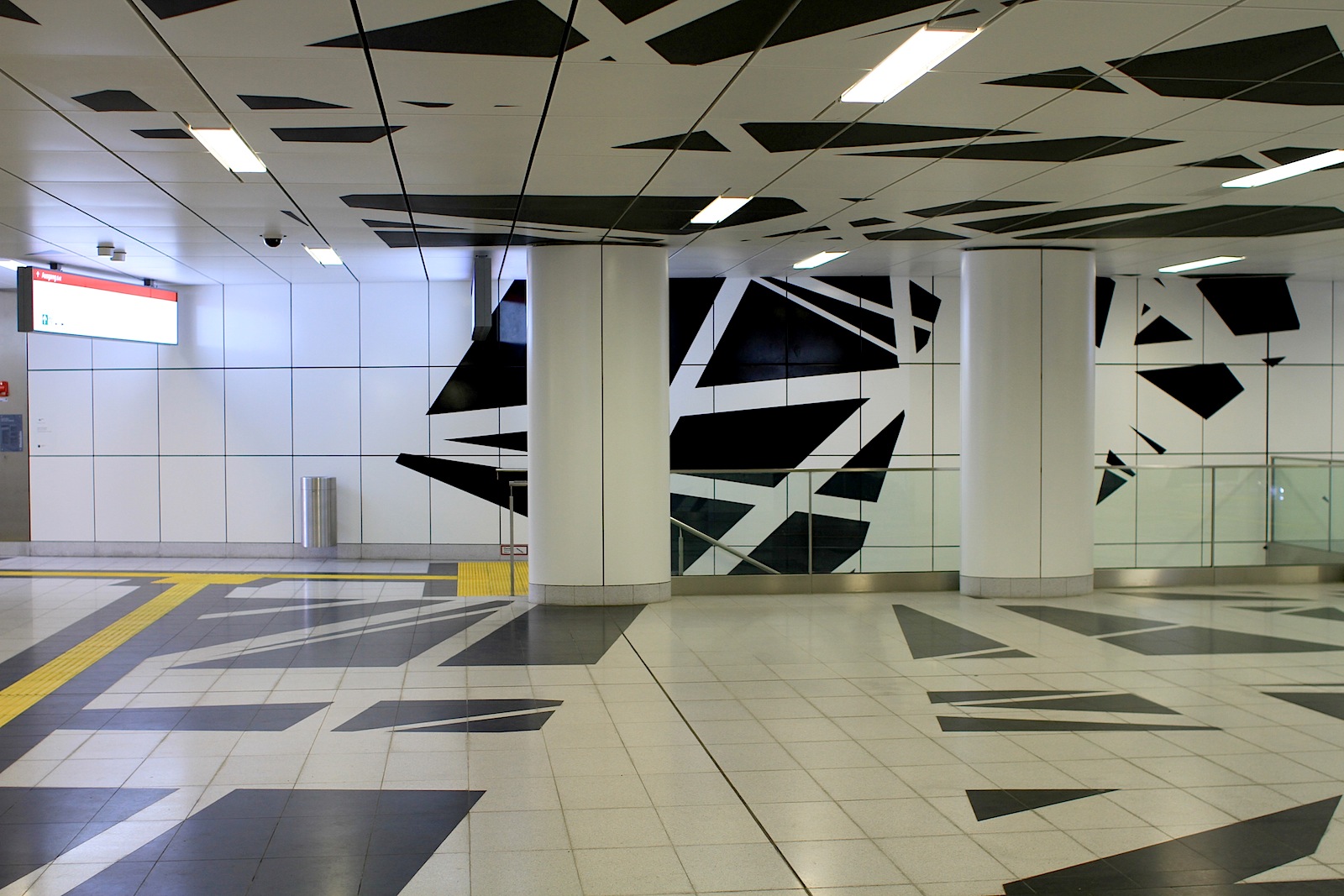
Pempelforter Straße Station
She measured the station and ...
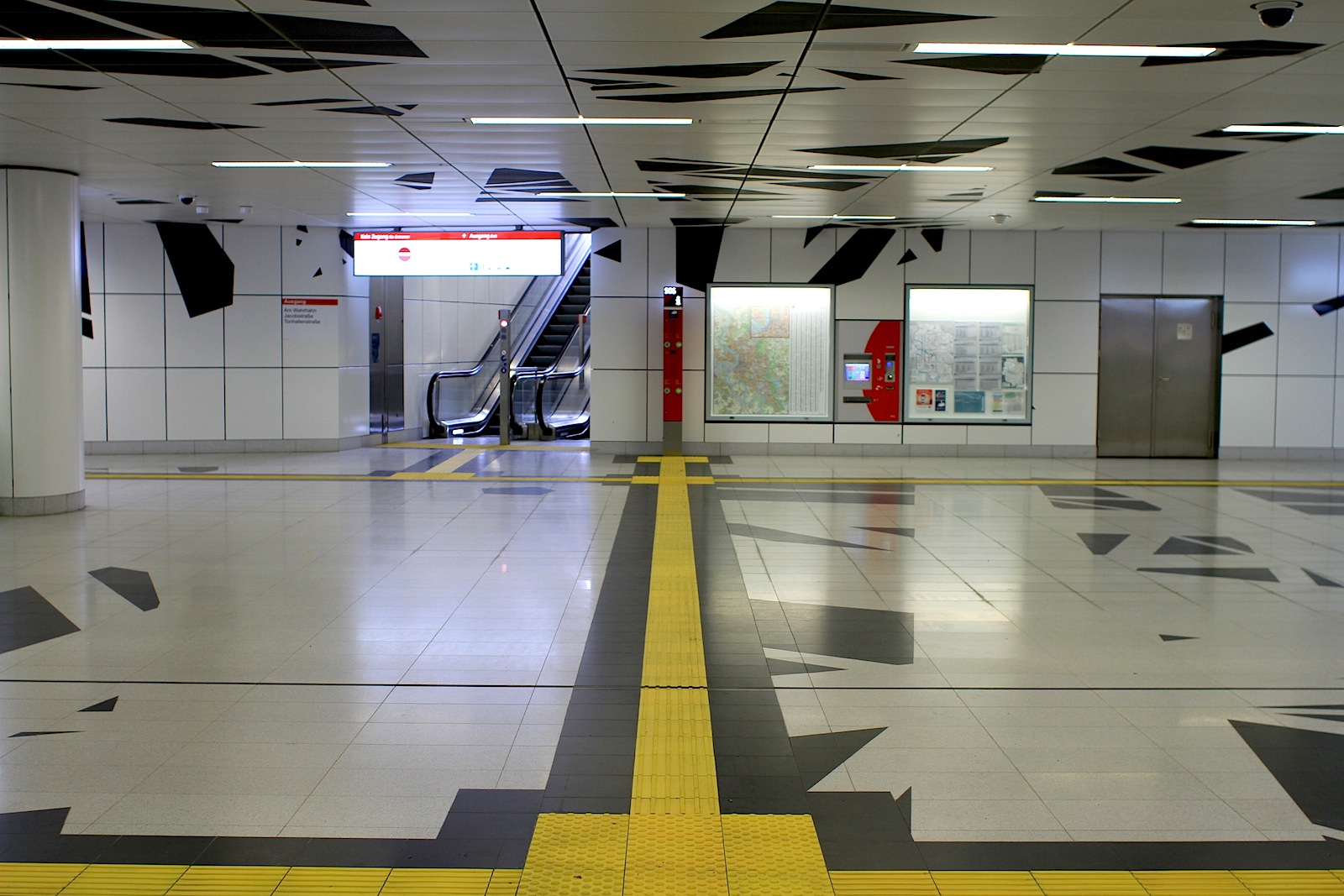
Pempelforter Straße Station
... transposed the measurements onto a 3D model.
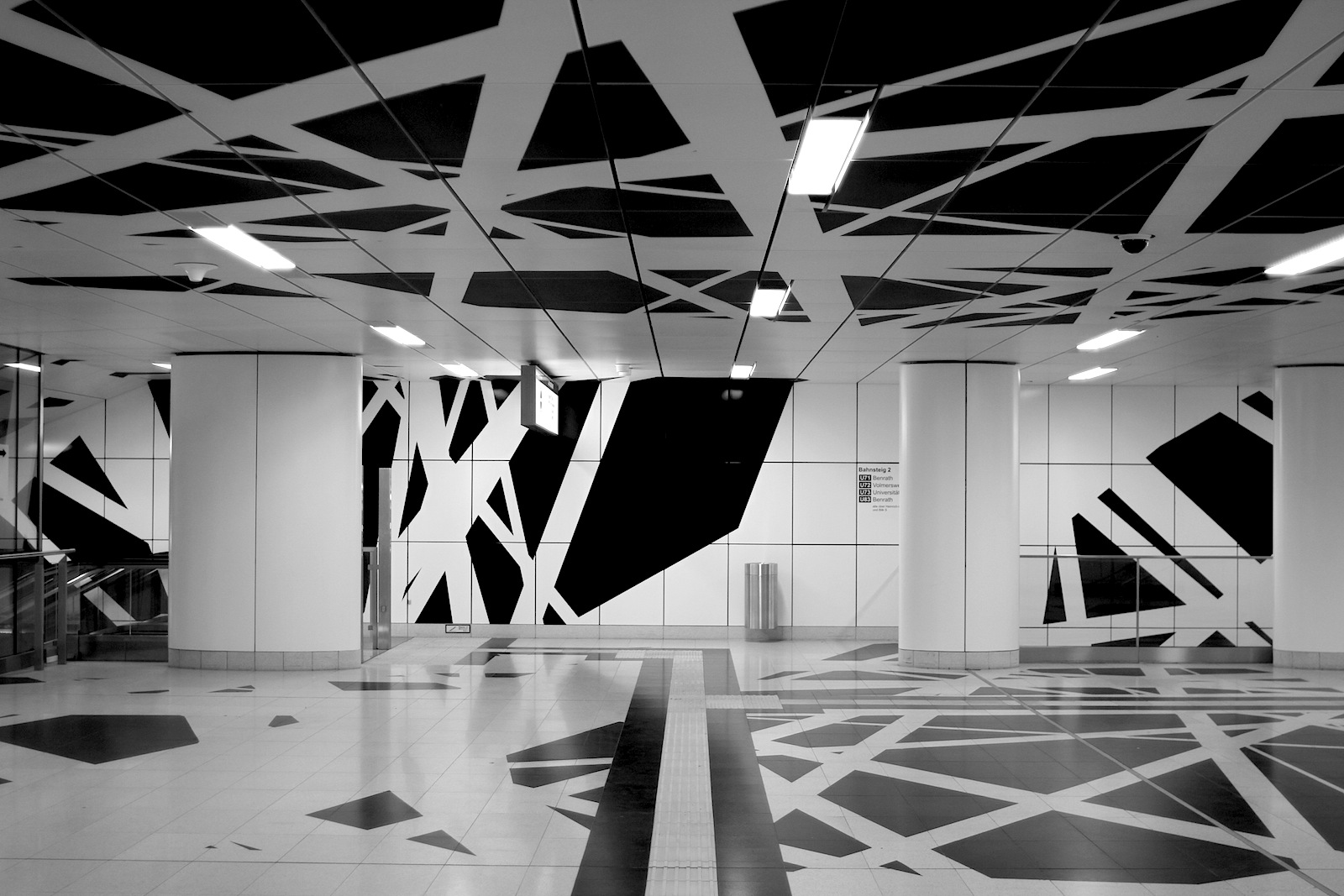
Pempelforter Straße Station
She took the directions of movement from each entrance, extended them into the station and ...
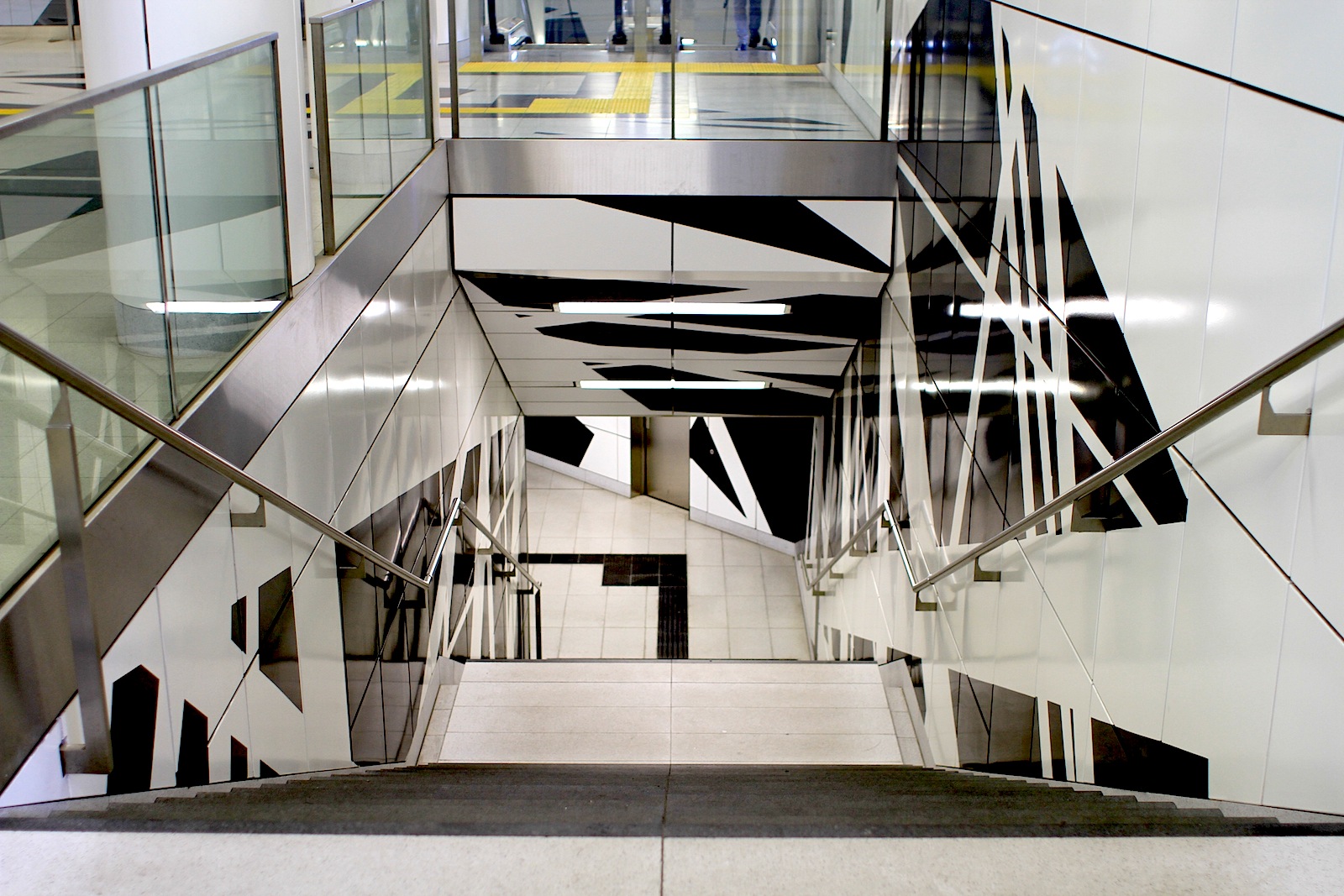
Pempelforter Straße Station
... placed four white bands, each with the same measurements as the entrances, as an inverted sculpture over the floor, walls and ceiling.
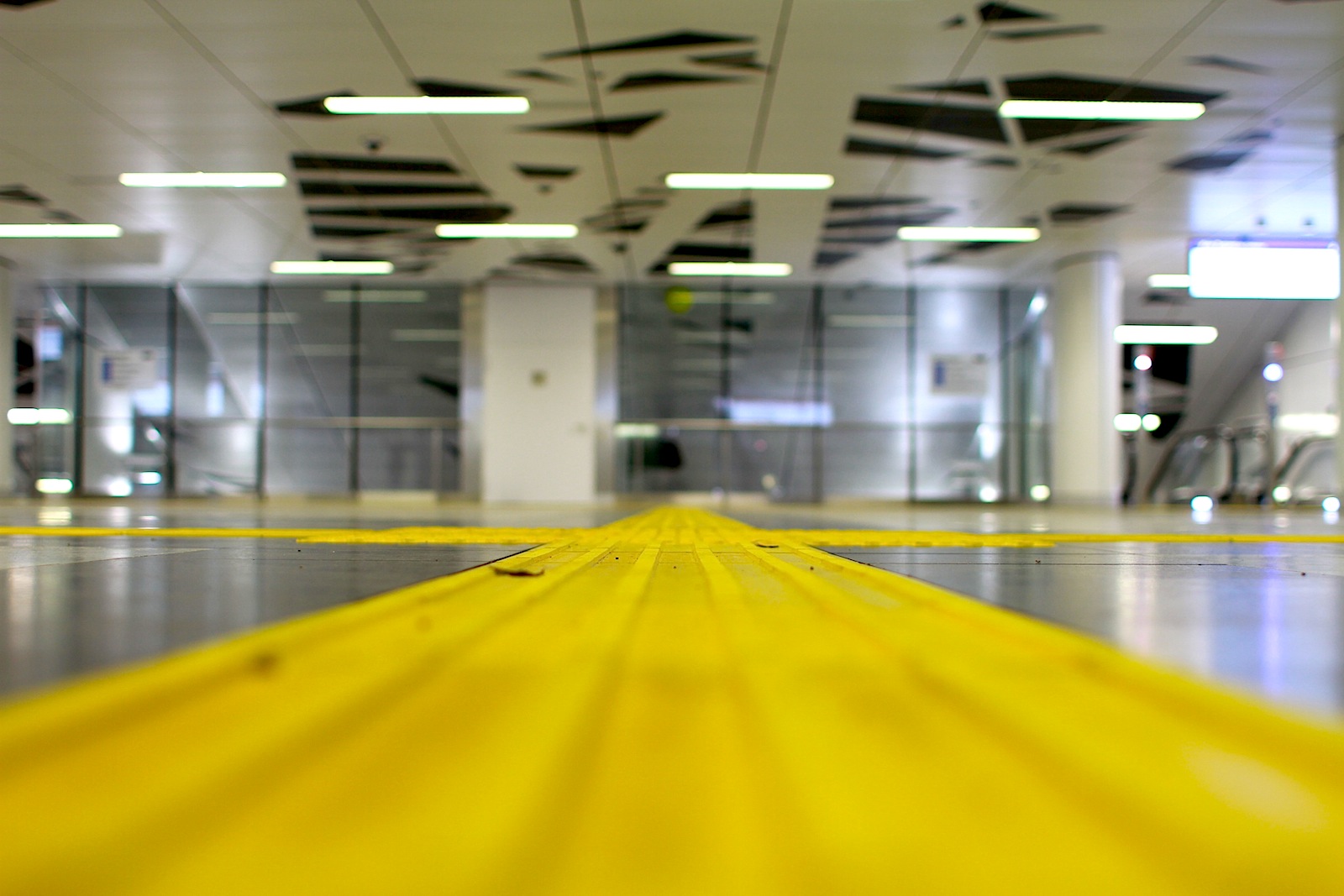
Pempelforter Straße Station
The directions of the edges of the space were recorded so that they could break and process the geometry of the room.
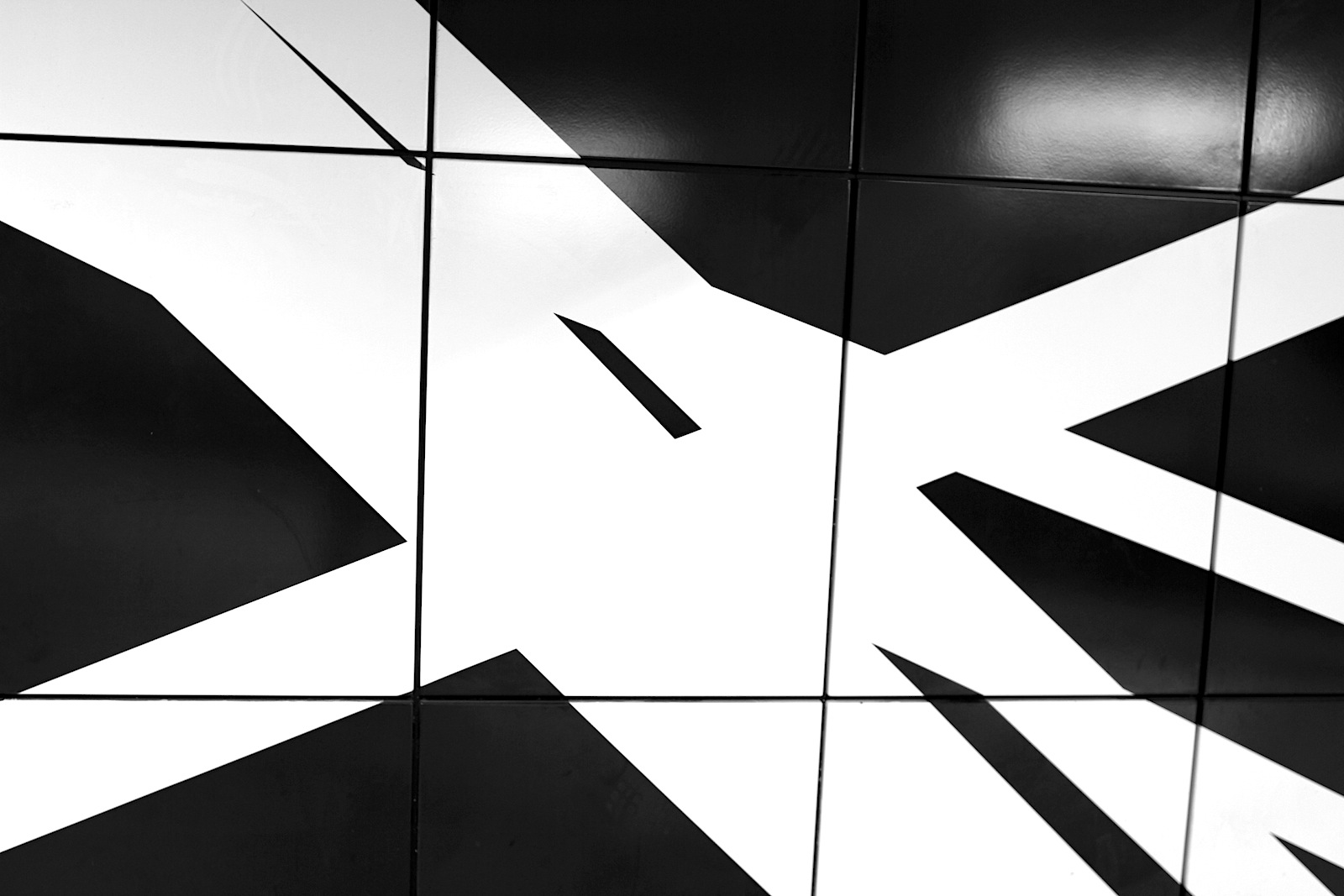
Pempelforter Straße Station
The resulting 3D effect with the dimensions of surfaces and spaces is surprising. It seems that the actual boundaries of the subway station have dissolved.
»The art does not serve to distract. It turns our awareness back to the very journey on which we find ourselves. Station after station.
«Gerrit Gohlke, author and curator
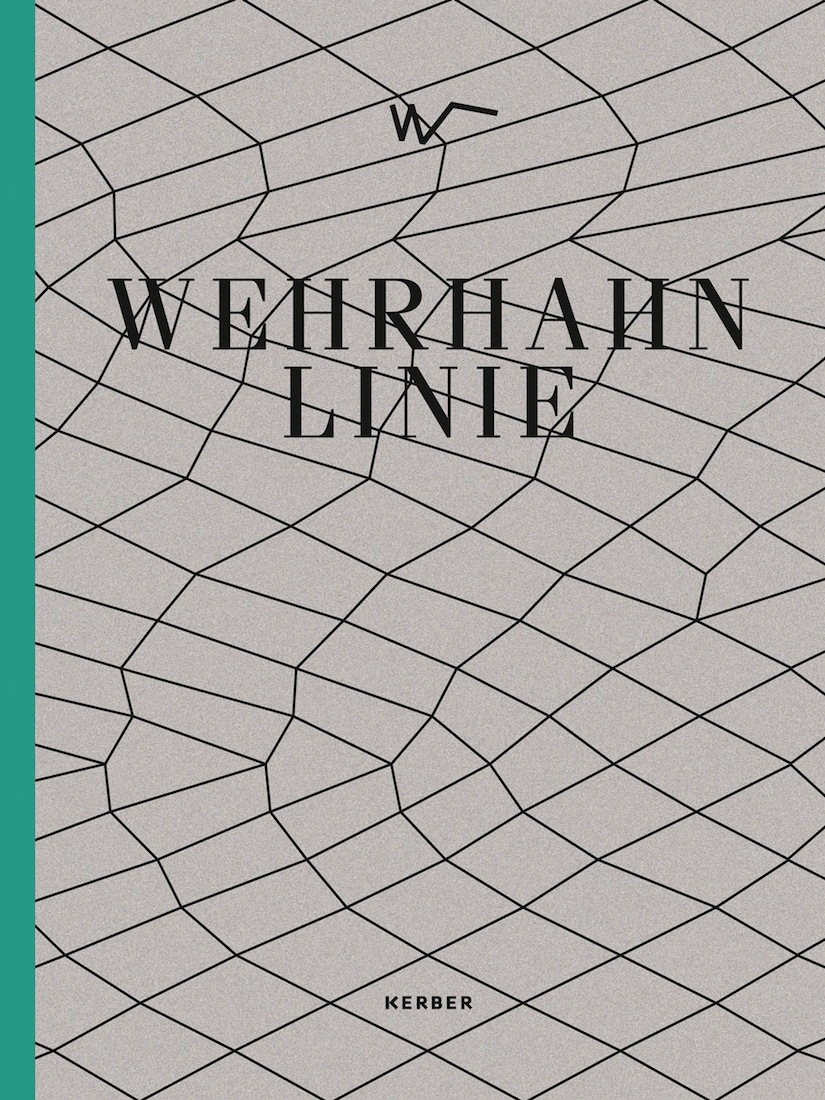
Wehrhahn-Linie
Wehrhahn Line by Kerber Verlag
The Wehrhahn Line is a length of the underground railway that was communally developed from the beginning, by architects, artists, engineers and the municipal administration in the centre of Düsseldorf. The project has a reputation for cooperative, holistic construction. The substantively and (photo)graphically sophisticated publication illuminates in detail the background of this unusual and exemplary cooperation. This book, with 240 pages, is divided into the chapters “Bau, Kunst, Architektur” (“Building, Art, Architecture”), “Kontinuum / Tunnel” (“Continuum / Tunnel”) and “Schnitt / Stationen” (“Section / Stations”). Even the boldly, delicately engraved cardboard cover illustrates the aspiration that the editors and designers have for the content and graphics. They realize the whole with the possibilities of publicity at the fore: interviews, essays, factual reports in conjunction with architectural photography, drawings and plans. In this way, the book shows the reader the way for future and similarly disposed projects that can develop into such traffic culture platforms, if everything goes as planned and the parties involved do not lose sight of the goal.
»Architecture and art can inextricably combine, such that they respond to each other in a process of cross-fertilization and mutual enhancement. Together, they can influence how we experience space.«
netzwerkarchitekten
Wehrhahn Lines U 71, U 72, U 73, U 83
Opening and launch in February 2016. Construction costs: 843.6 million euros, supported by the City of Düsseldorf, the State of North Rhine-Westphalia and the German Federal government. Route length: 3.4 km double-track tunnel. Quantity of steel: 22,000 tons. Quantity of concrete: 240,000 cubic meters. Number of panels for the “Continuum”: Approx. 6,700. Estimated passage volume: weekdays 53,000 people.
netzwerkarchitekten
In 1997, Thilo Höhne, Karim Scharabi, Philipp Schiffer, Jochen Schuh, Markus Schwieger and Oliver Witan founded the office of netzwerkarchitekten in Darmstadt. As an interdisciplinary team the company’s projects center on architecture, urban planning and design; the planning ranges from housing and cultural centers, religious edifices, transportation construction and trade fair booths to research and educational institutions. Architecture has no need for a rigid ideology: netzwerkarchitekten’s design strategies are based on a desire to find simple yet significant solutions for the complex environment in which they operate, and to satisfy users’ needs for straightforward and unpretentious way. “Tausendfüßler” (Millipede) bridge in Oberhausen, completed in 1999 in the context of IBA Emscher Park, won the office nationwide recognition in Germany. Further examples of the company’s successful projects include the community centre for the St. Thomas Parish in Mannheim (2007), the Überseequartier HafenCity Hamburg subway station (commissioned in 2012) and the six subway station for the Wehrhahn Line in Düsseldorf (2016).
Enne Haehnle
Studied sculpture at the Kunsthochschule Kassel and the Kunstakademie Düsseldorf. She has worked at various social interfaces, including cultural centres and museums. She has worked as a lecturer and professor of sculpture, educational sciences and stage design at various educational institutions. She exhibits internationally in France, Egypt, Ecuador and New Zealand. She lives and works in Leipzig.
Manuel Franke
Born 1964 in Bonn. Studied at Kunstakademie Düsseldorf and in Paris. In 2005, he was awarded a fellowship at the Villa Massimo in Rome. He has held a number of lectureships. He has realized numerous art-in-architecture projects for public buildings, for example, at the Federal Office for Migration in Nuremberg. He develops distinct technical methods for every project.
Thomas Stricker
Born 1962, St Gallen. Trained as an electrician before studying sculpture at Kunstakademie Düsseldorf from 1986–1993. He has received numerous awards, exhibits internationally, and has realized projects in all manner of public spaces around the world. His teaching activities include lecturing and teaching assignments at a number of universities. His work hinges on the artistic concept of “sculptural questioning” and on investigation of a broad variety of public, natural and social spaces.
Ralf Brög
Studied at the Kunstakademie Düsseldorf and at Goldsmiths College in London. He is the co-initiator of the SITE artist’s project and editor of the SITEmagazine. Since 2002 he has been Senior Lecturer at the University of Sunderland, UK. He has realized several art-in-architecture projects in public spaces and private collections.
Ursula Damm
Studied at Kunstakademie Düsseldorf and at the Acedemy for Media Arts in Cologne. Her installations have recently increasingly drawn on media reflections of interactive and living spaces. She has taught and carried out research at the Trondheim Academy of Fine Art and UCSD San Diego; since 2004 she has been a professor at the Bauhaus University in Weimar. She has received numerous awards. Her work is part of a number of public collections, including HEK Basel and the Ludwig-Museum Koblenz.
Heike Klussmann
Studied at Kunstakademie Düsseldorf and the University of the Arts Berlin. She received a numerous awards and exhibited internationally, among others in Berlin, Toronto, London, Hong Kong. She has taught and conducted research at numerous institutions, including the ArtCenter College of Design, Pasadena (USA), and at Monash University, Melbourne (Australia). Since 2005 she has been working as a professor for art and architecture at Kassel University.